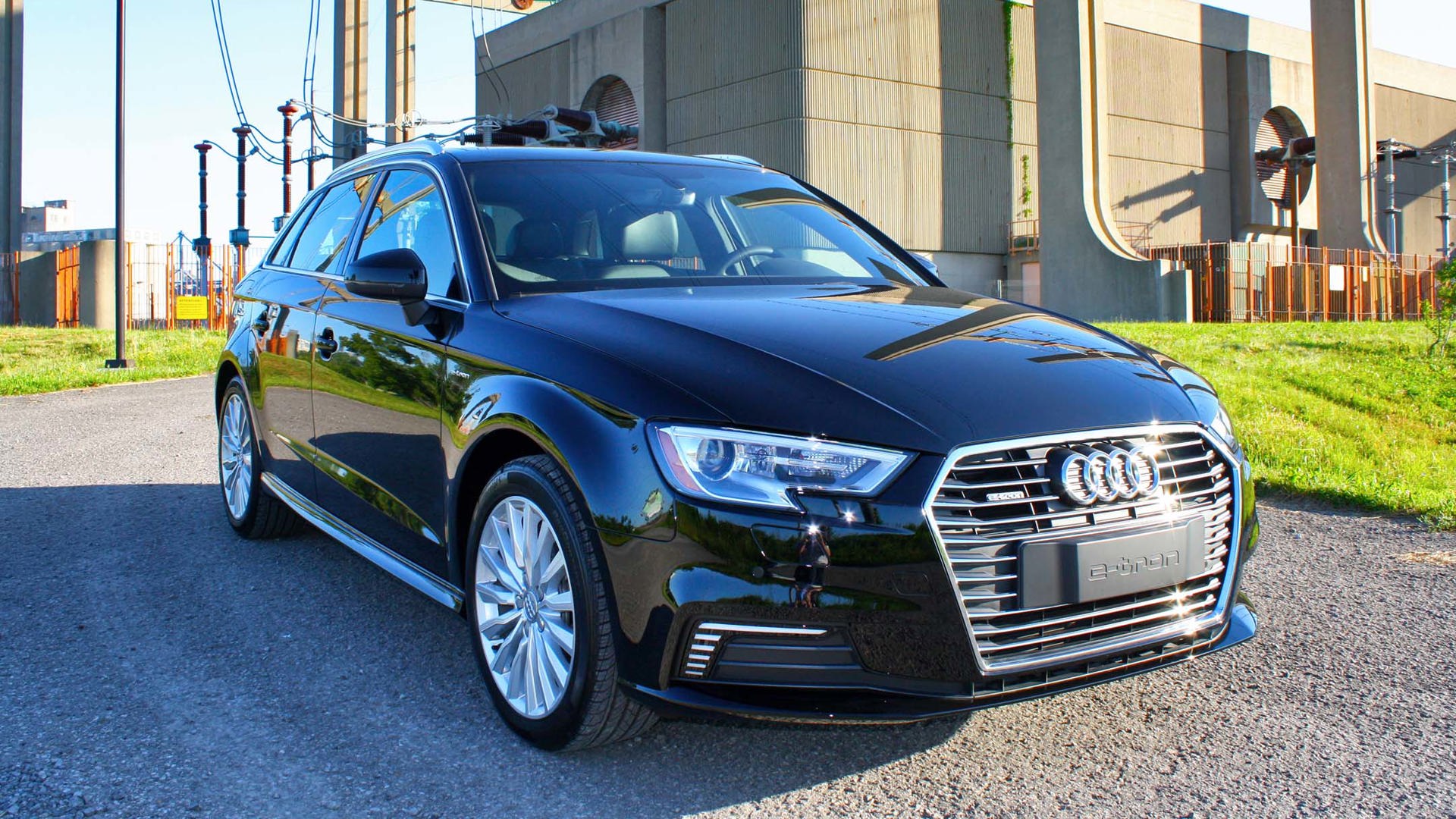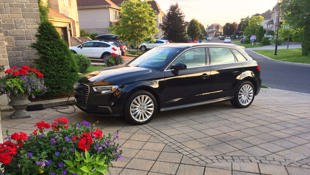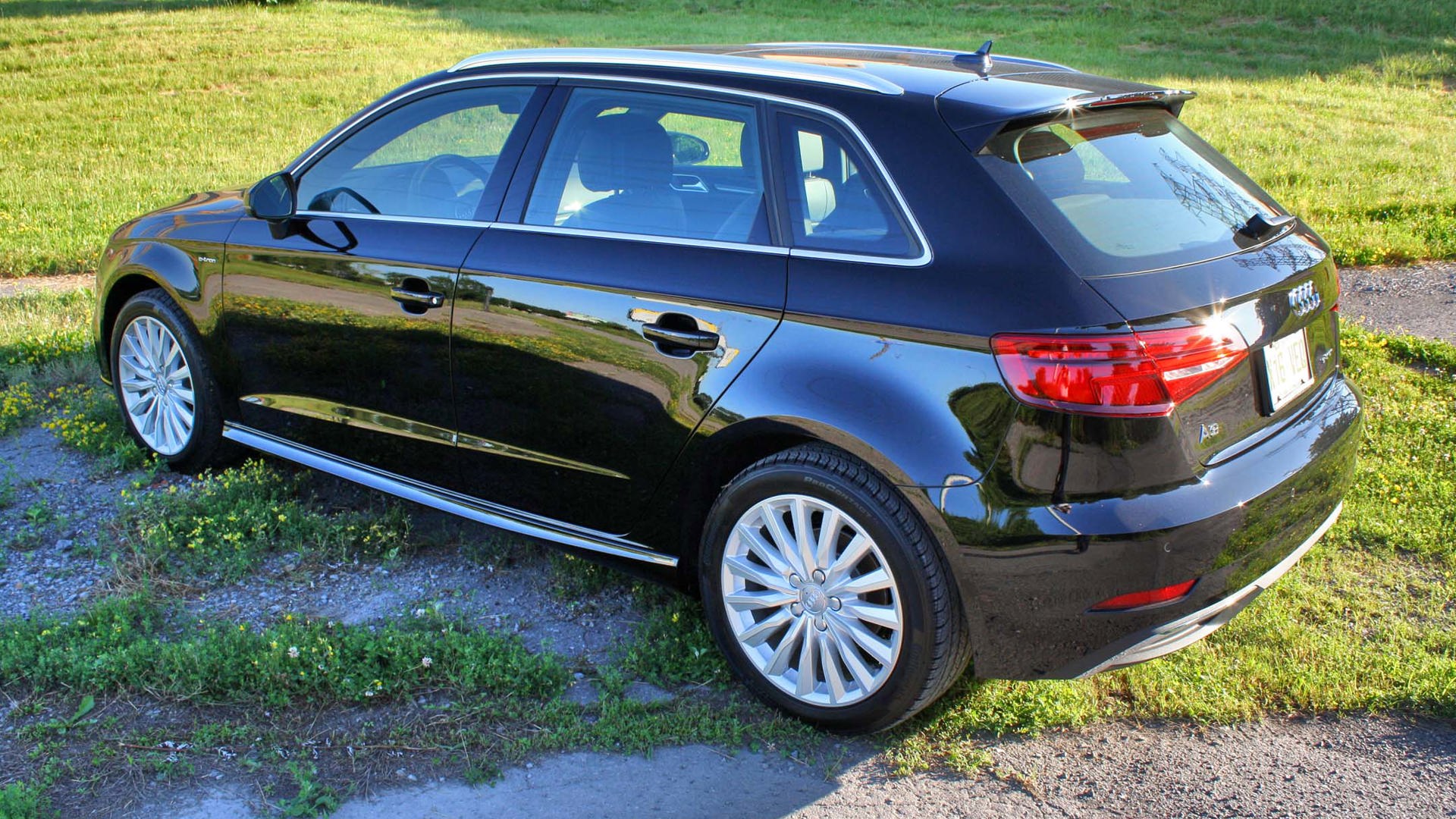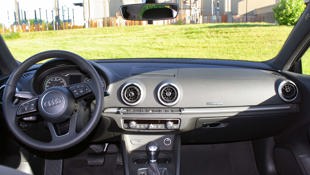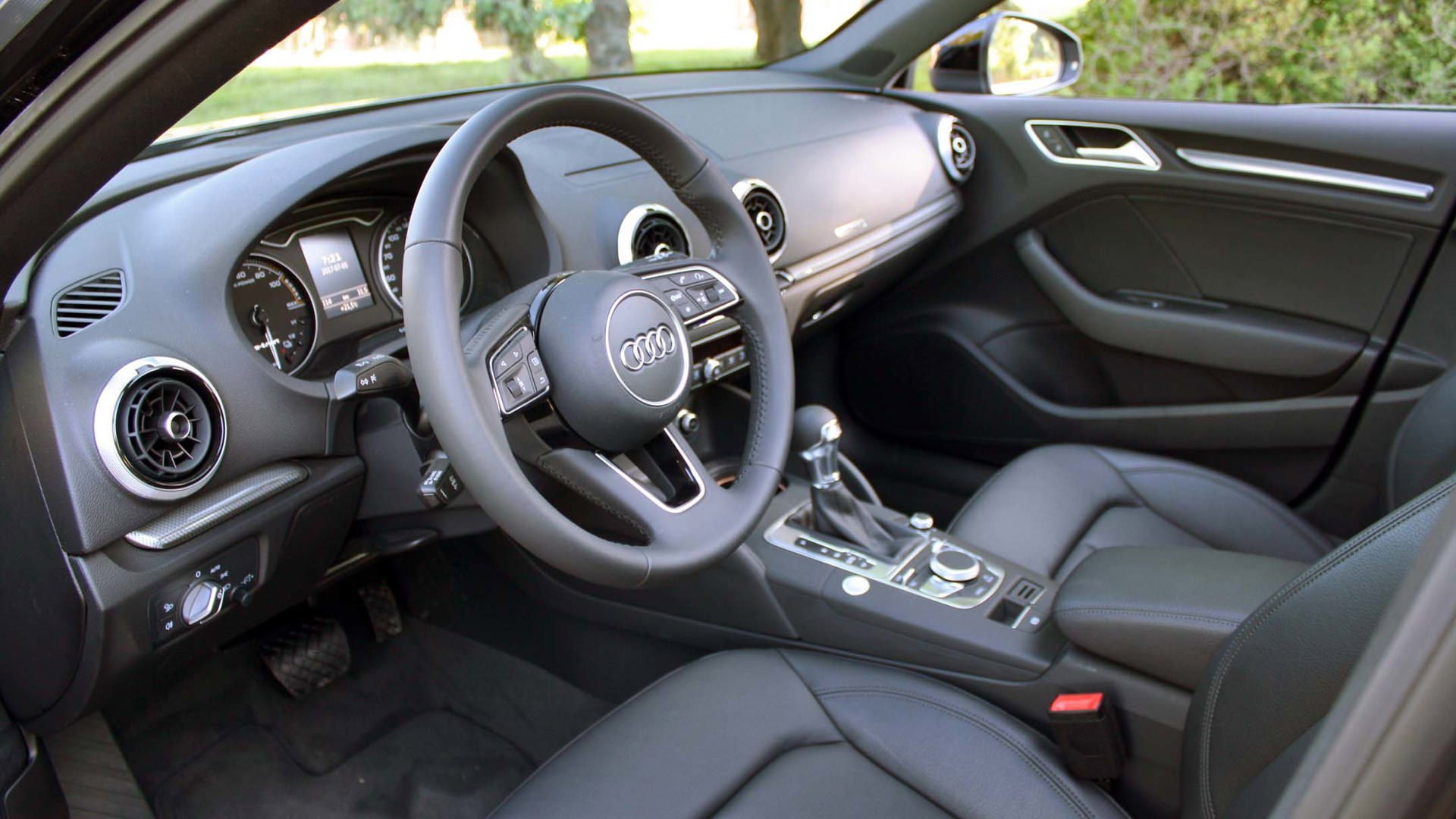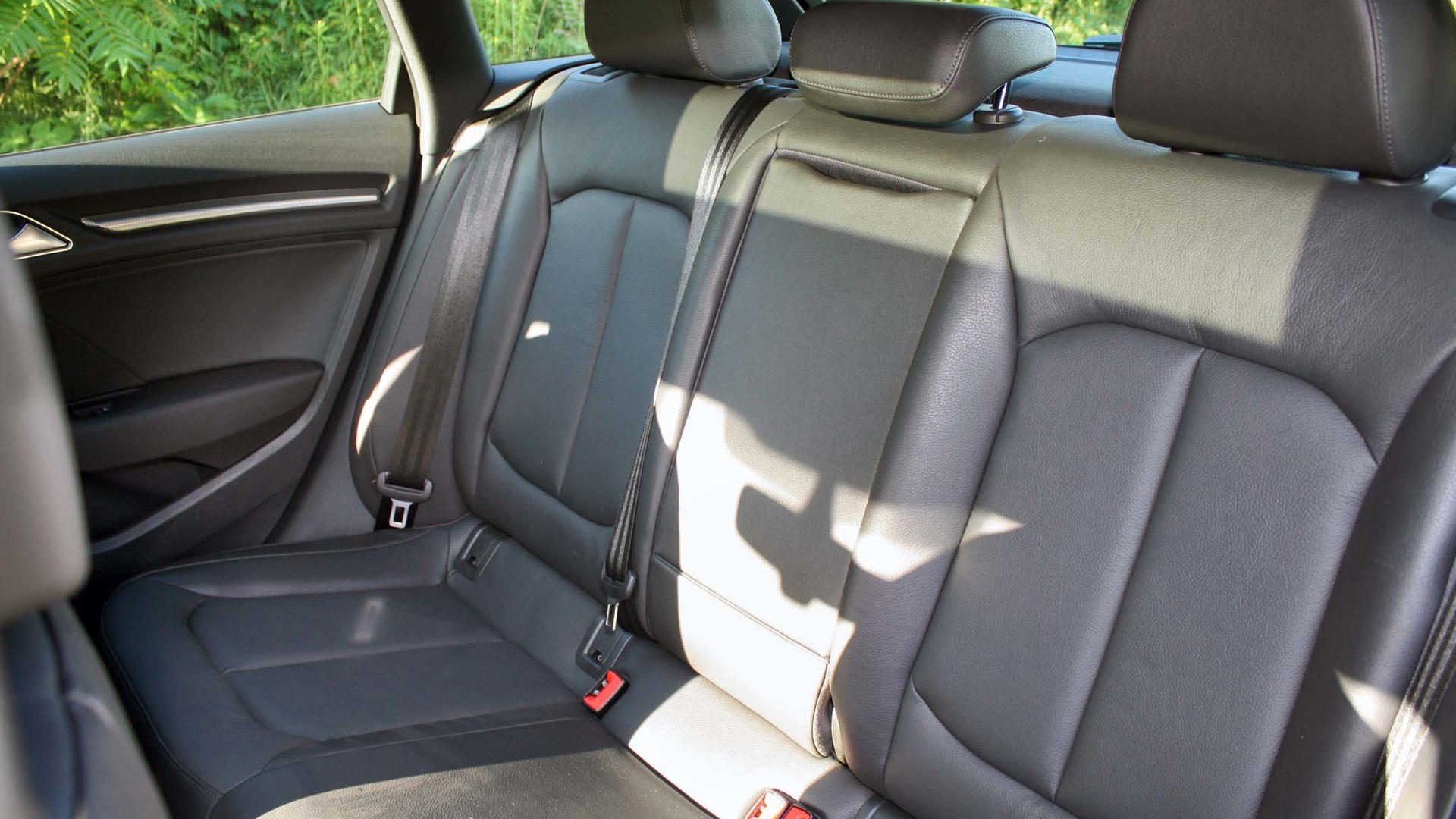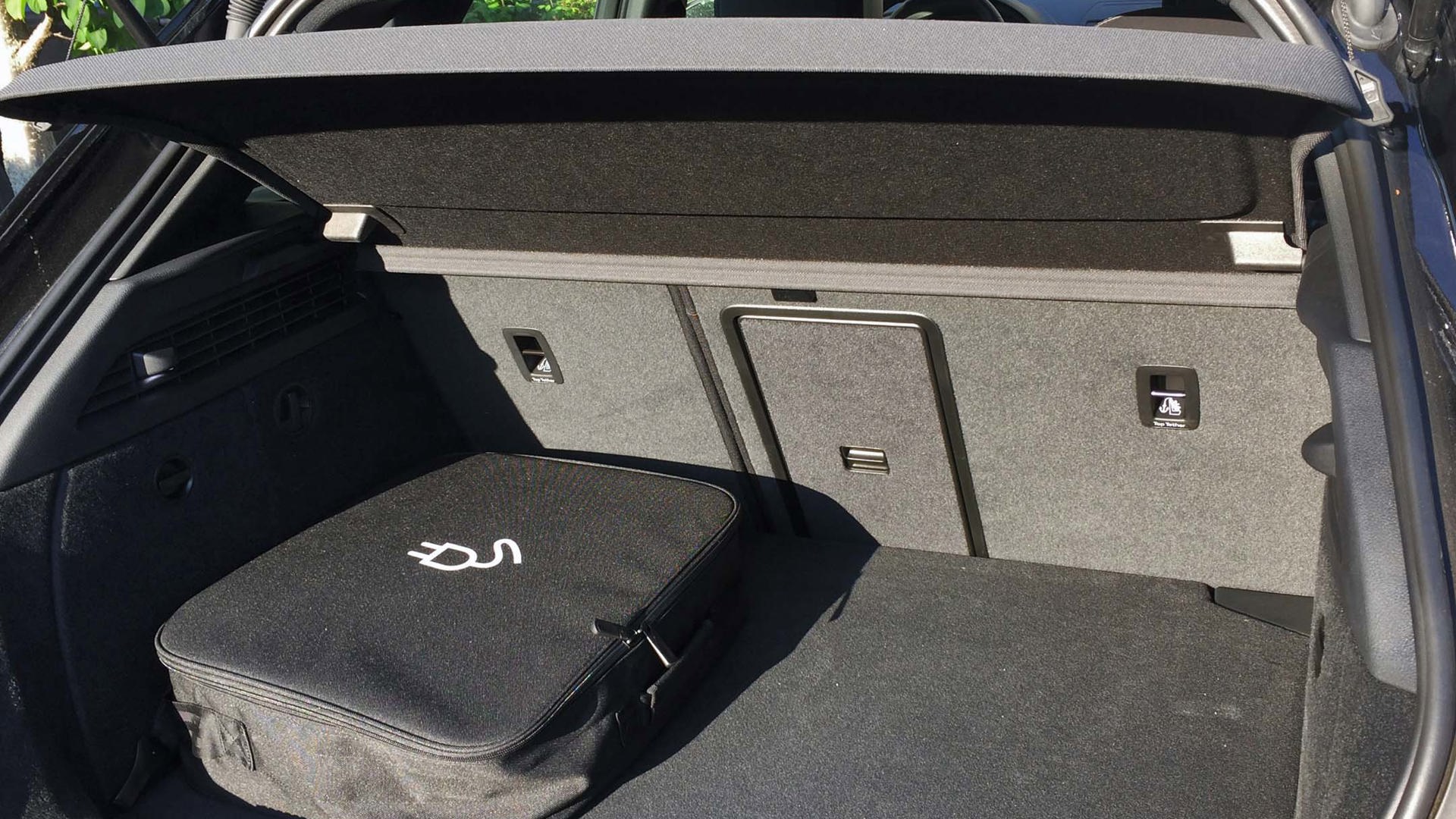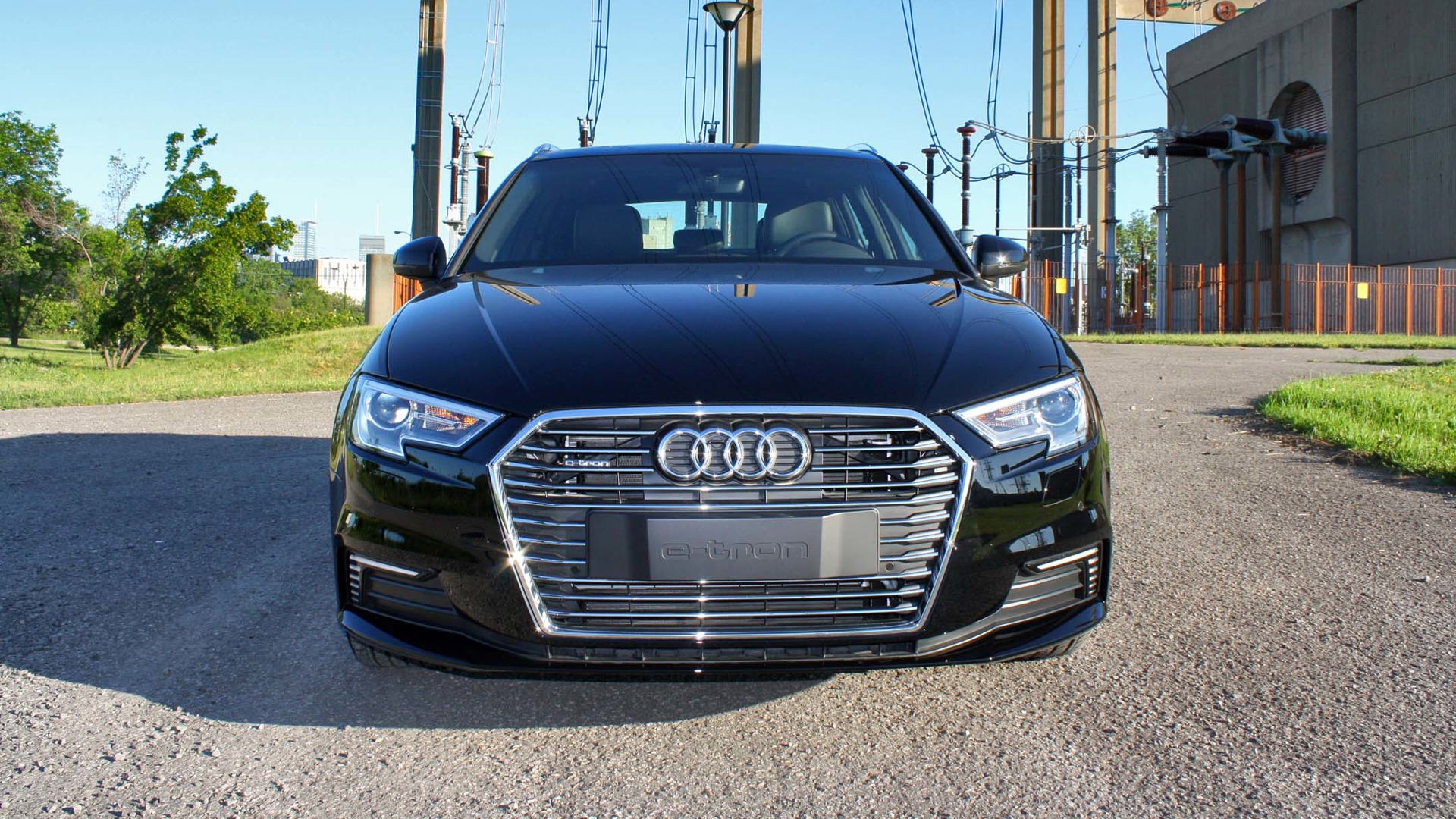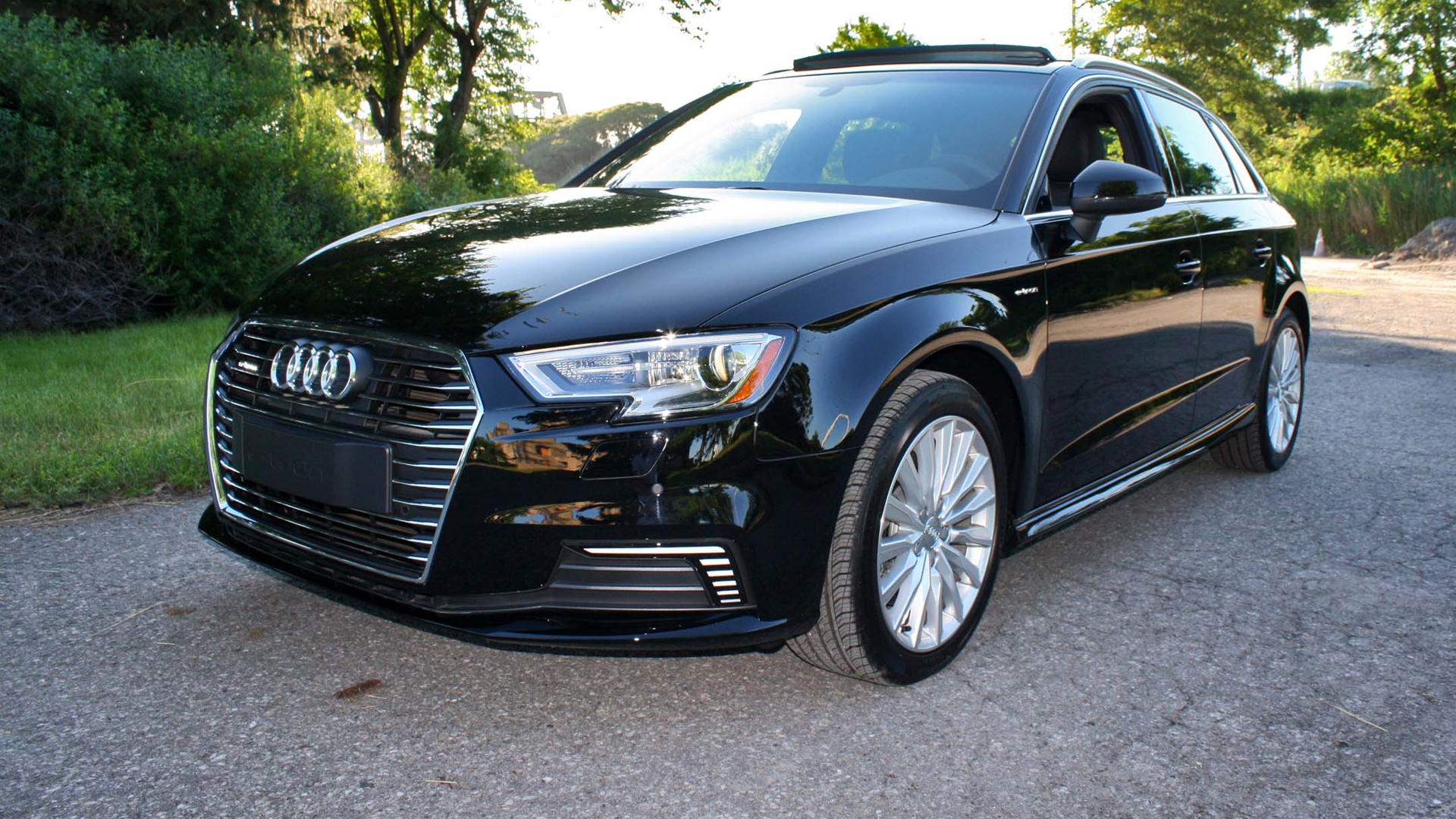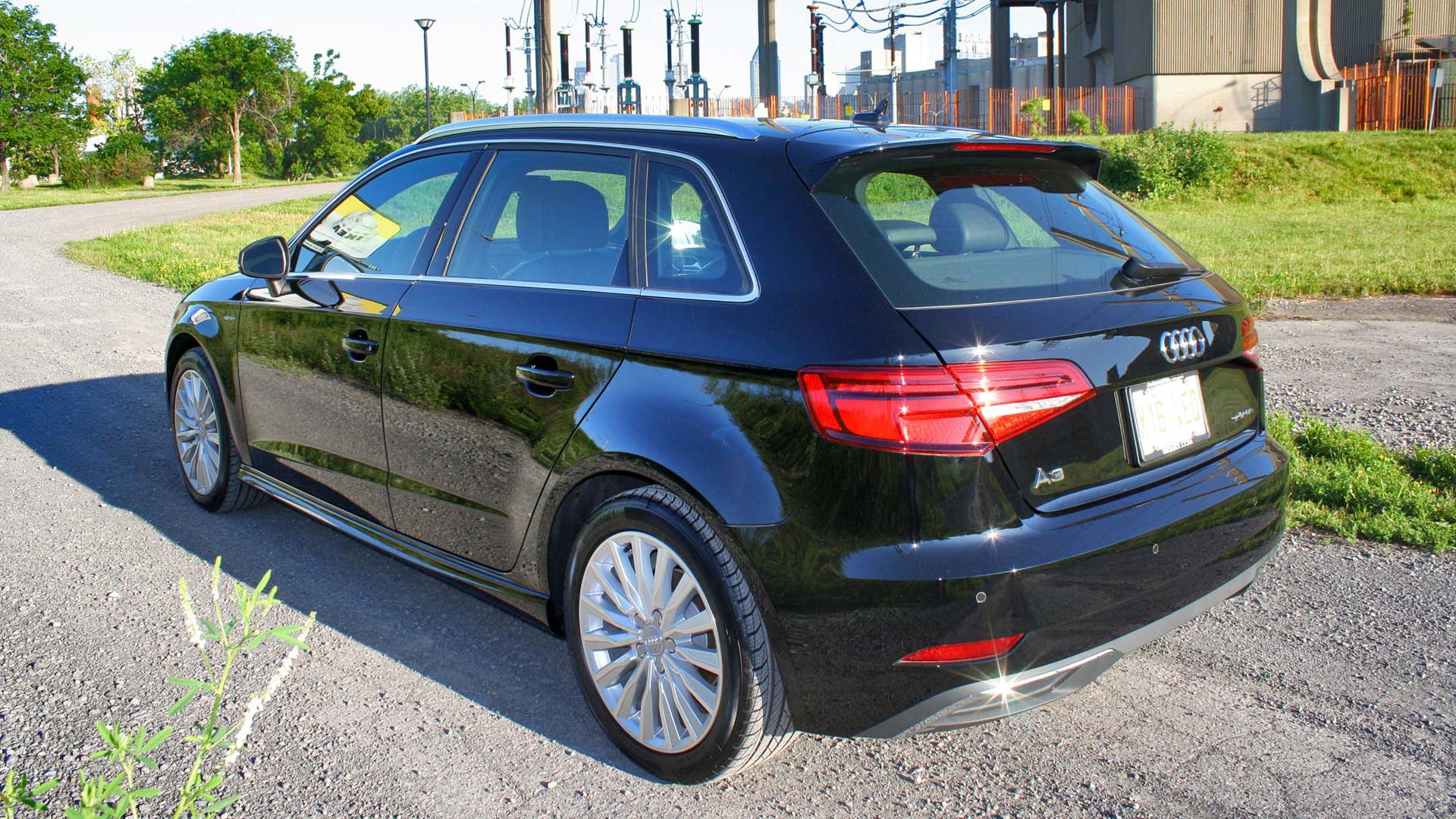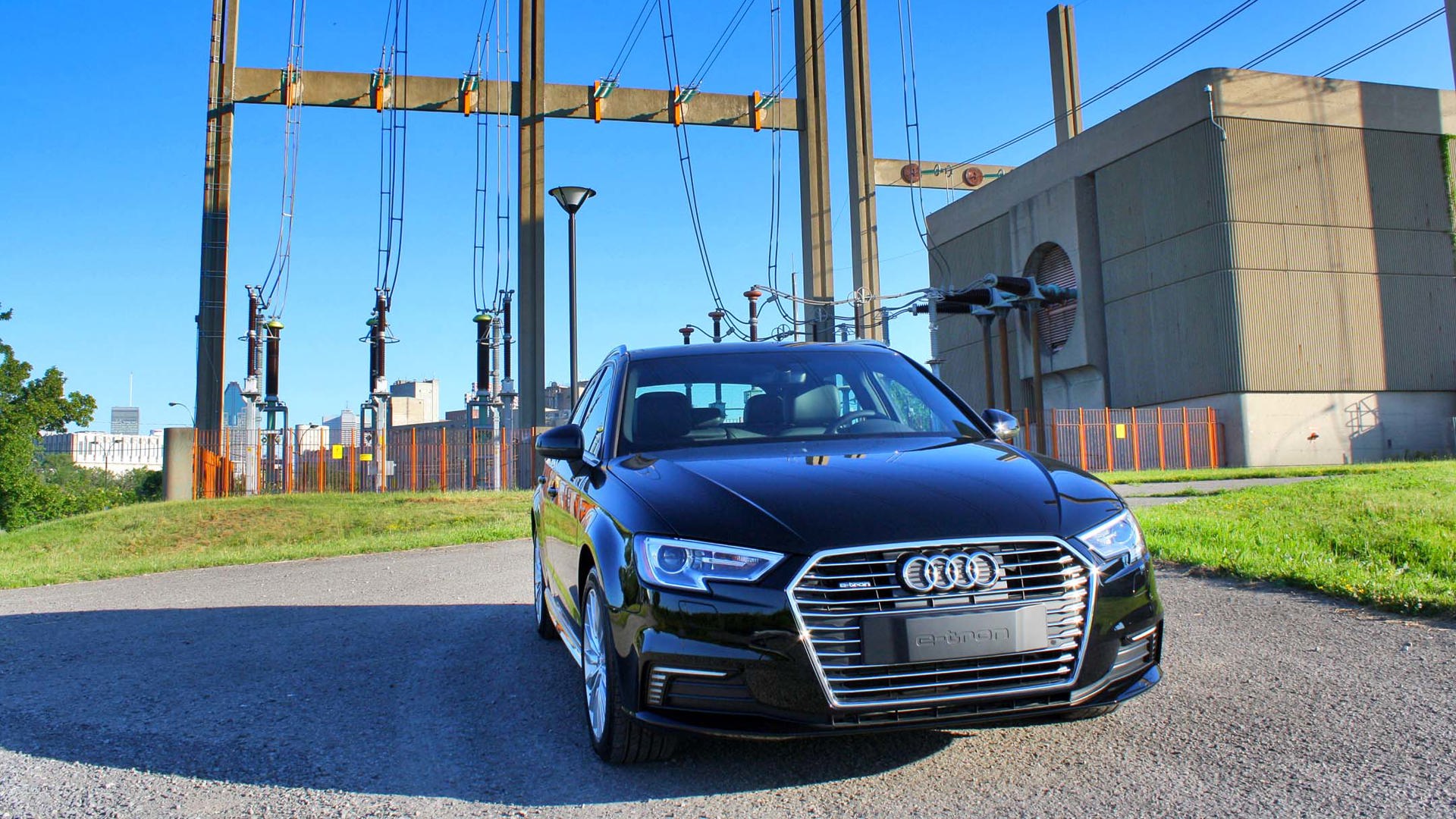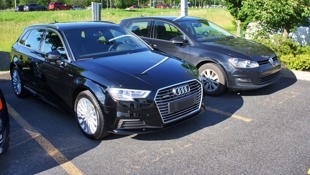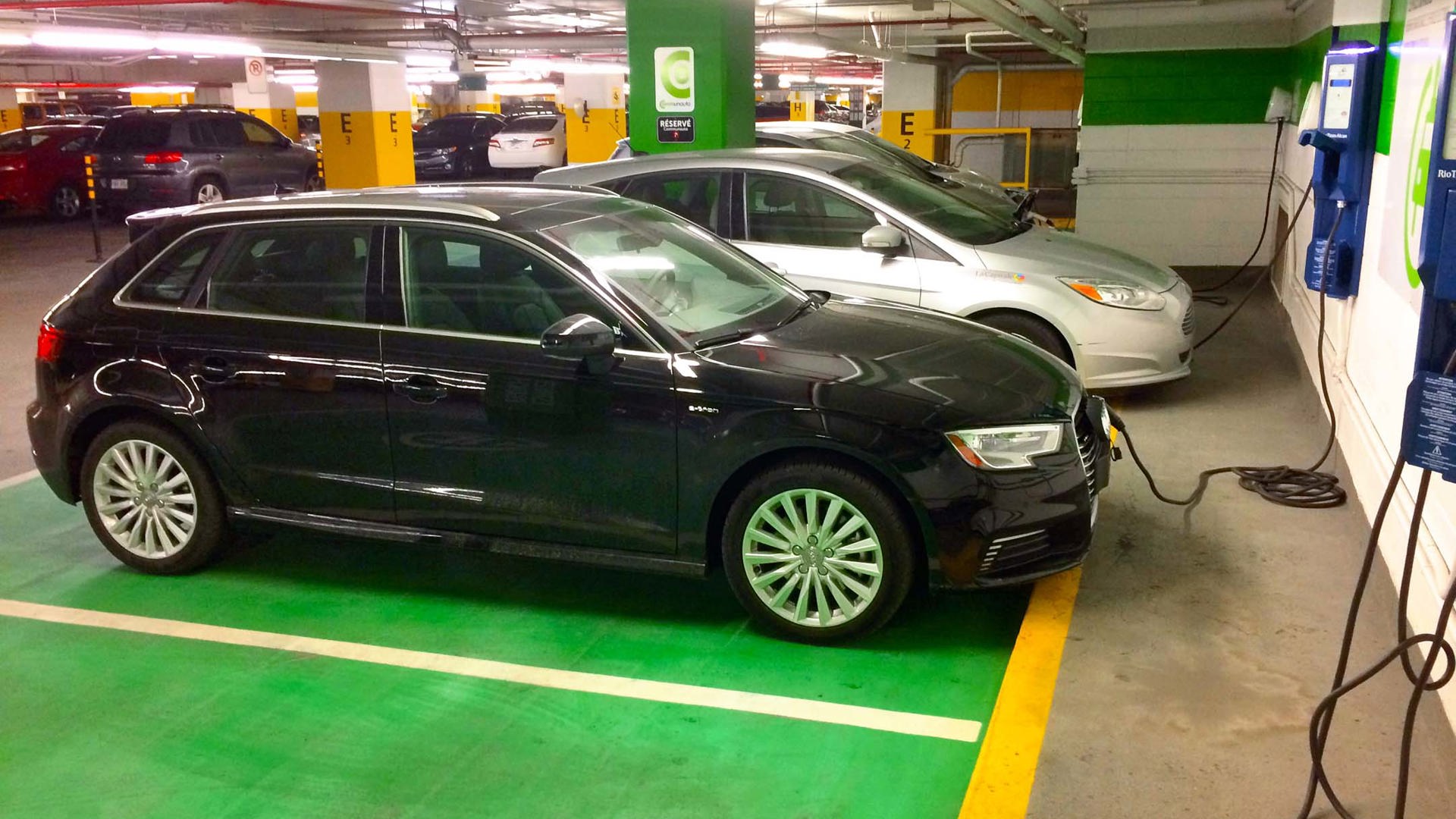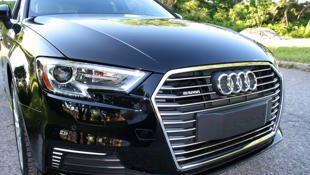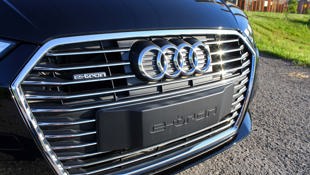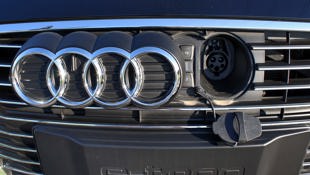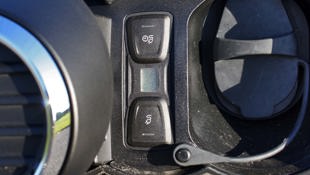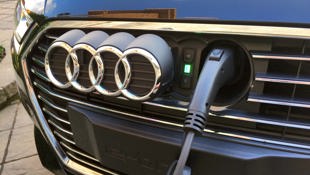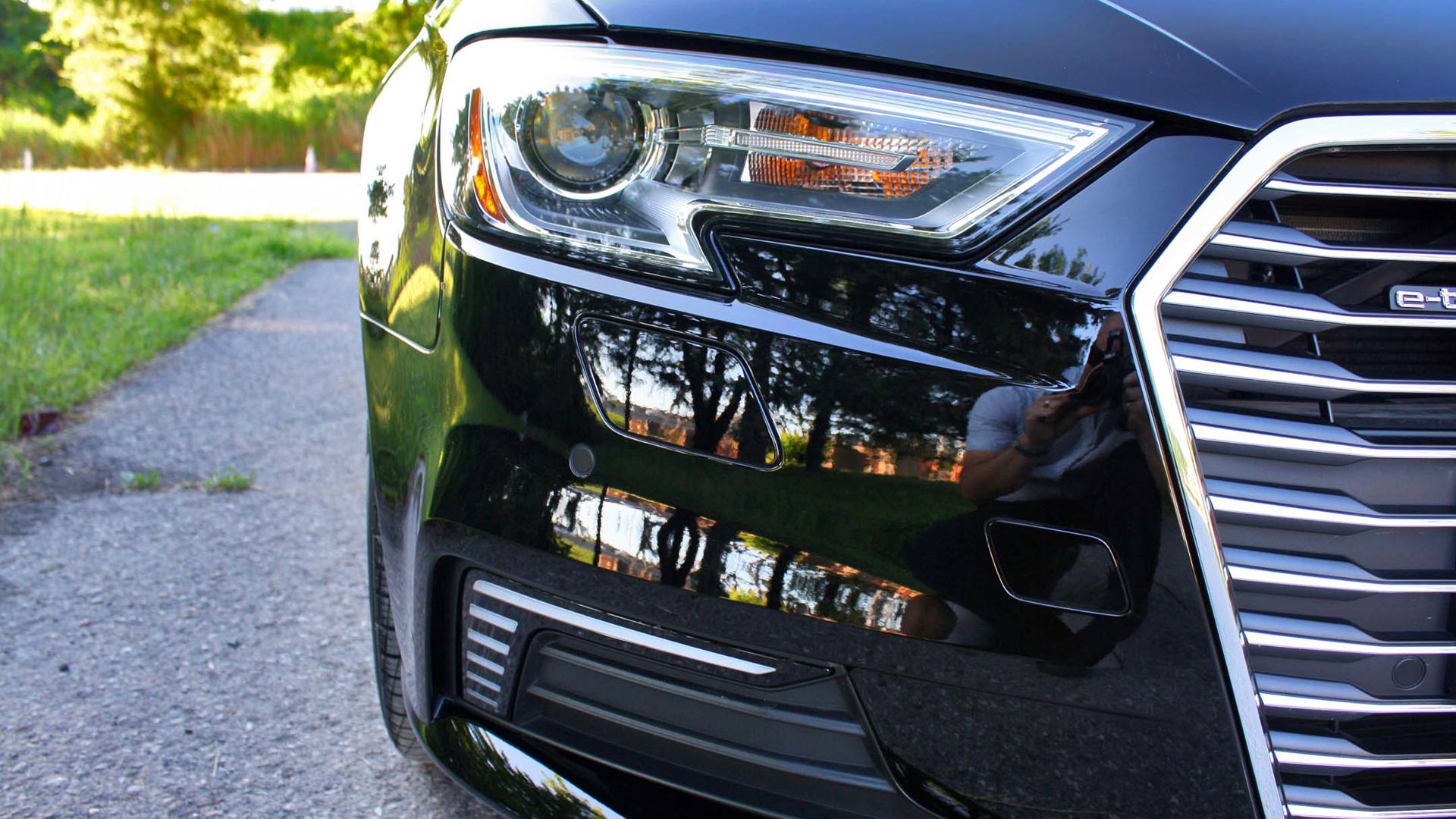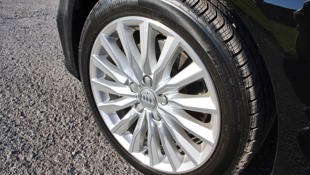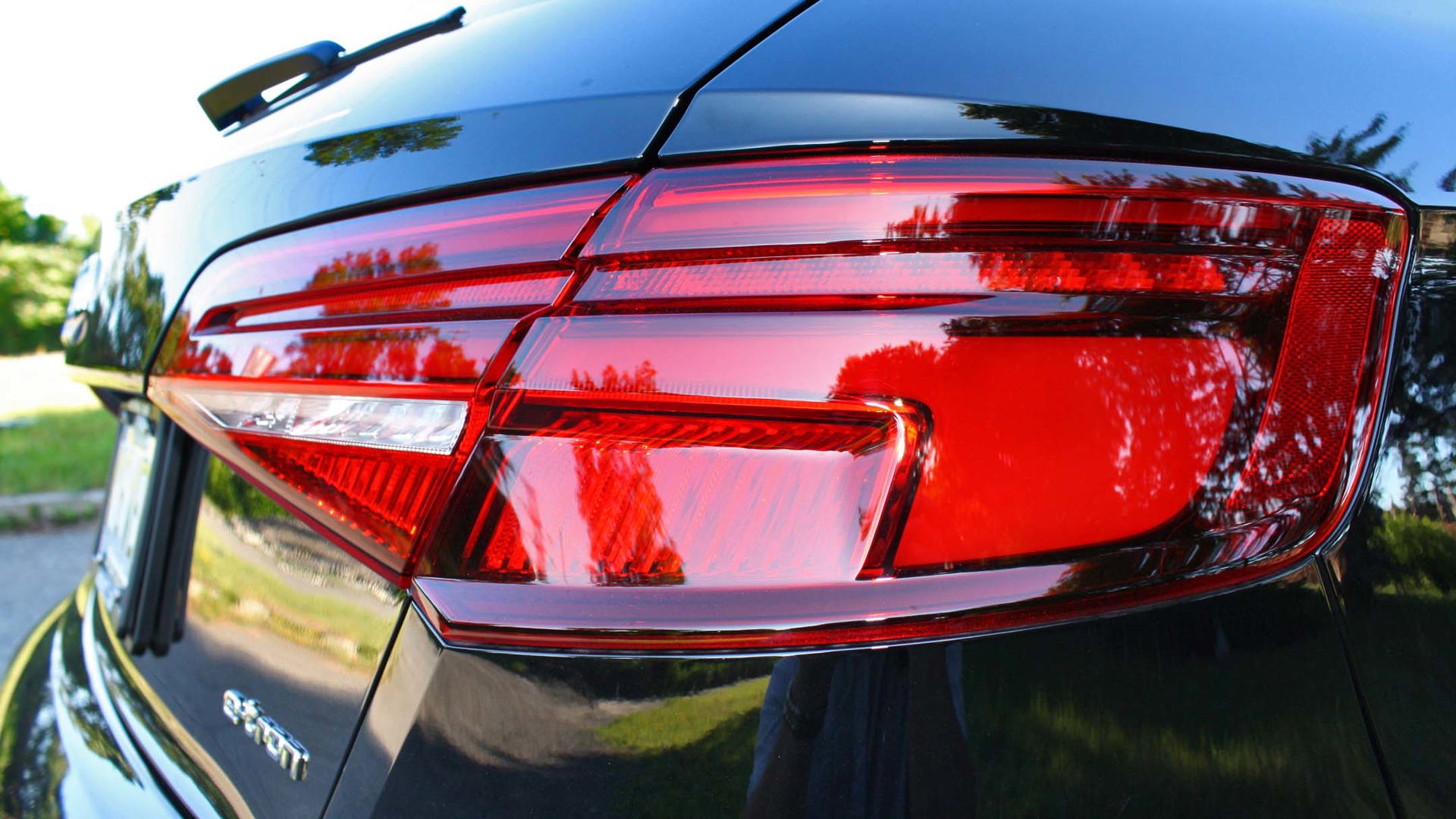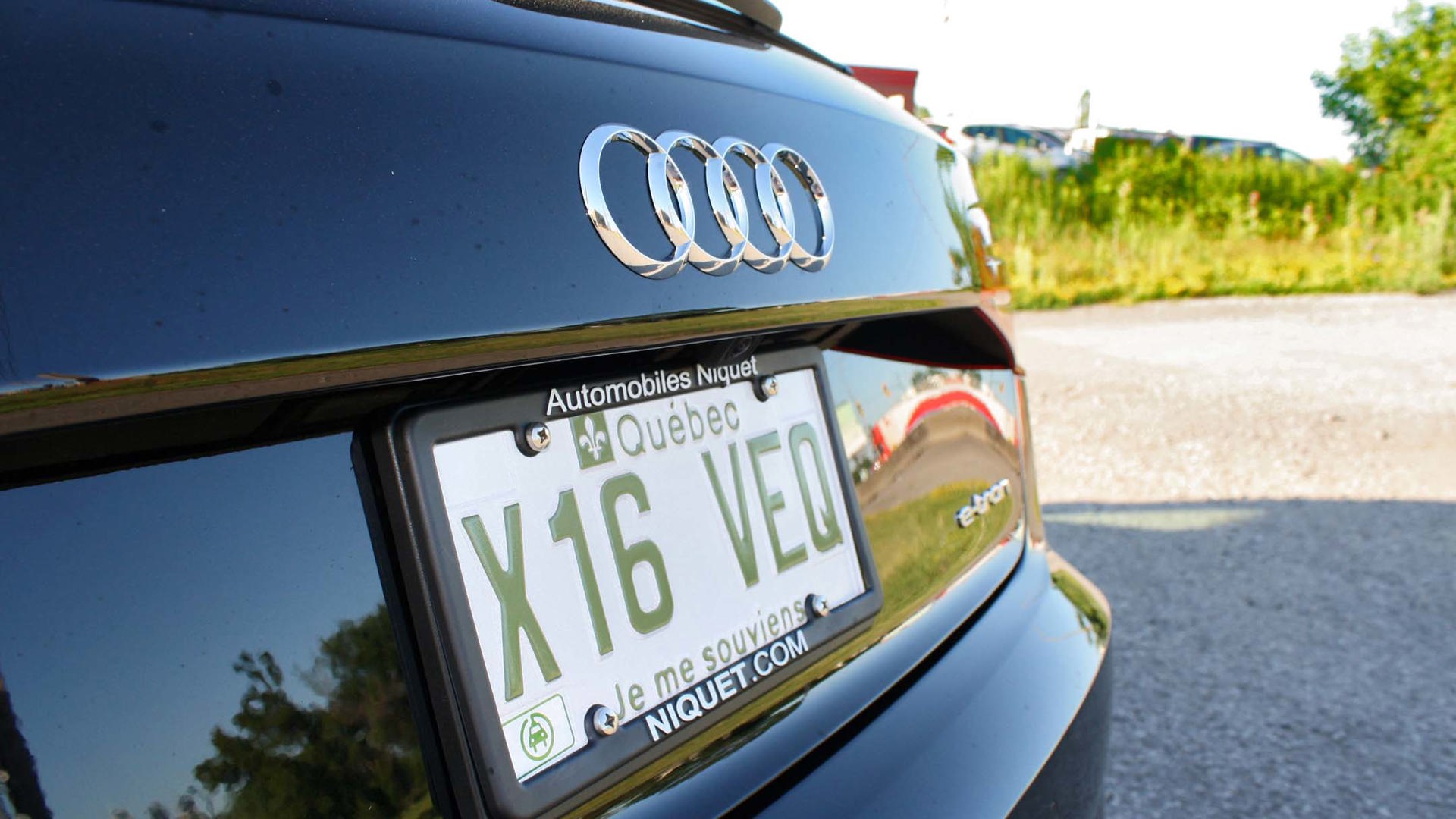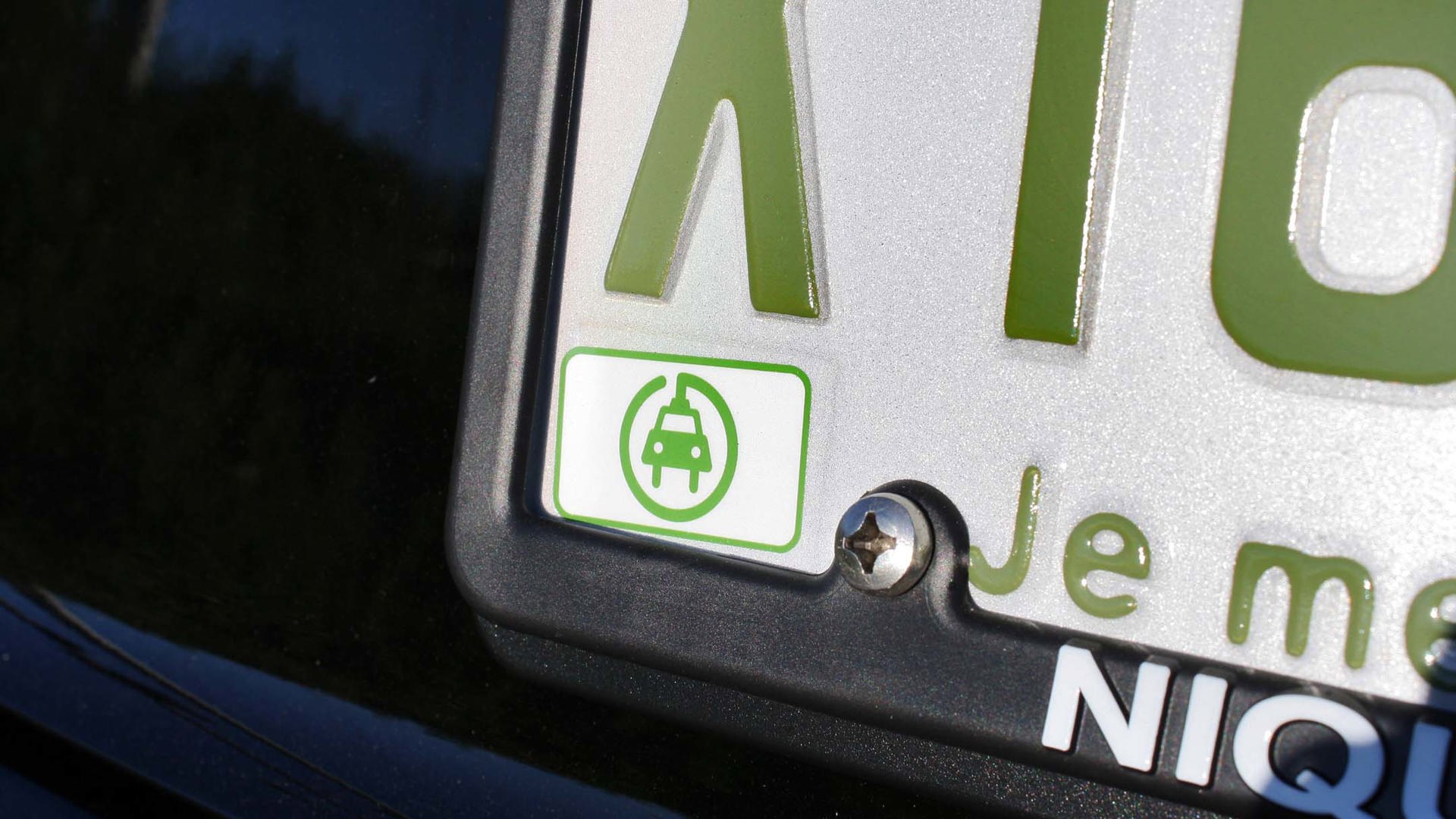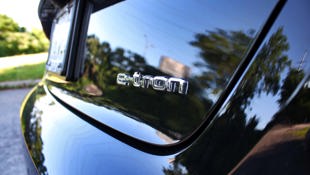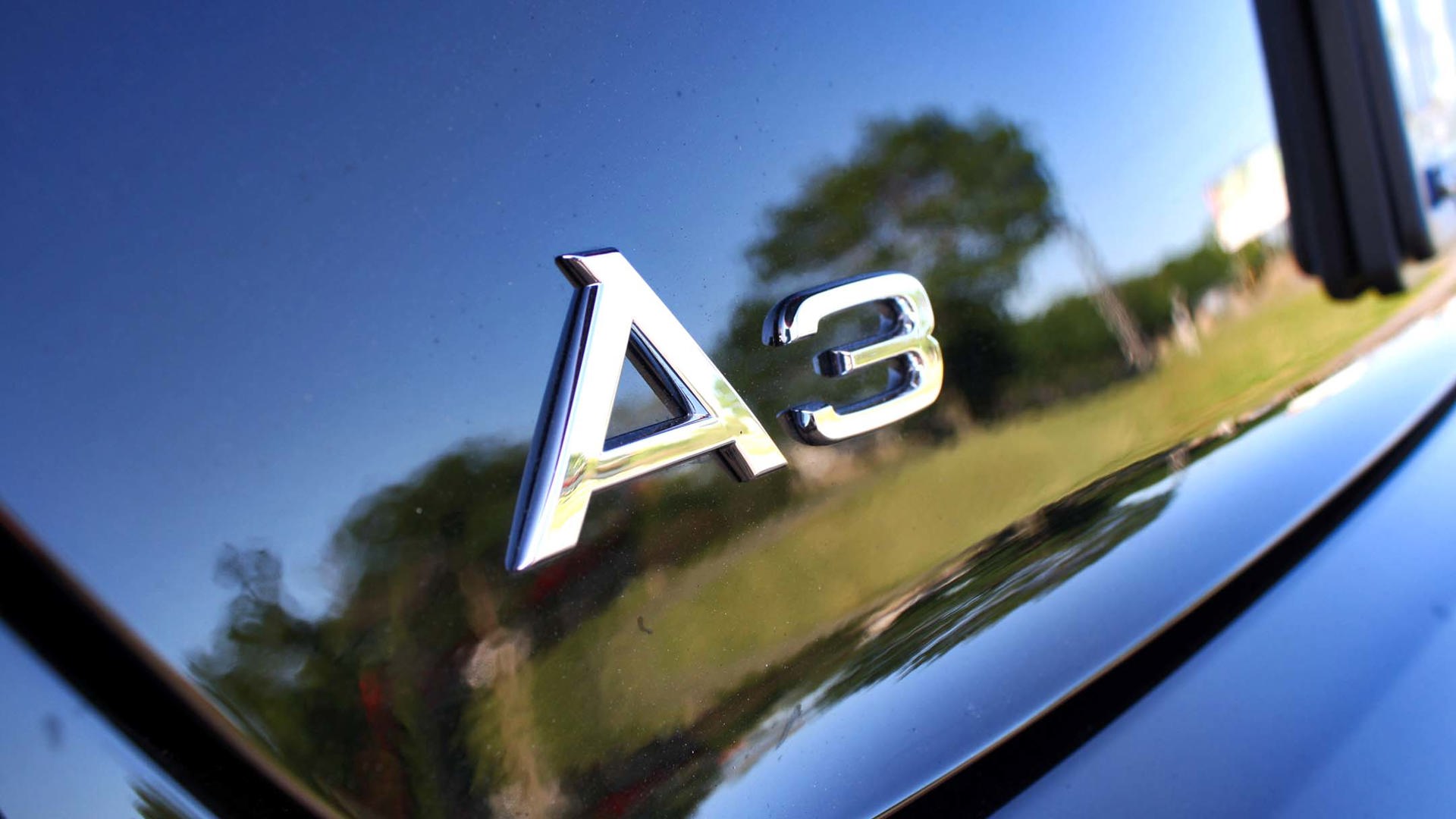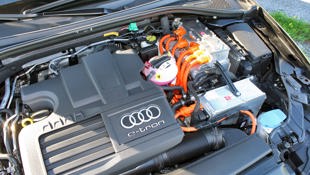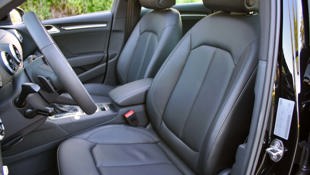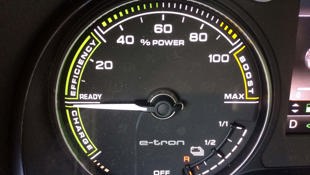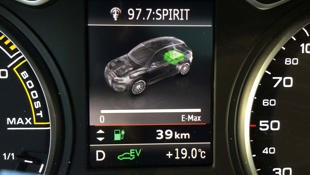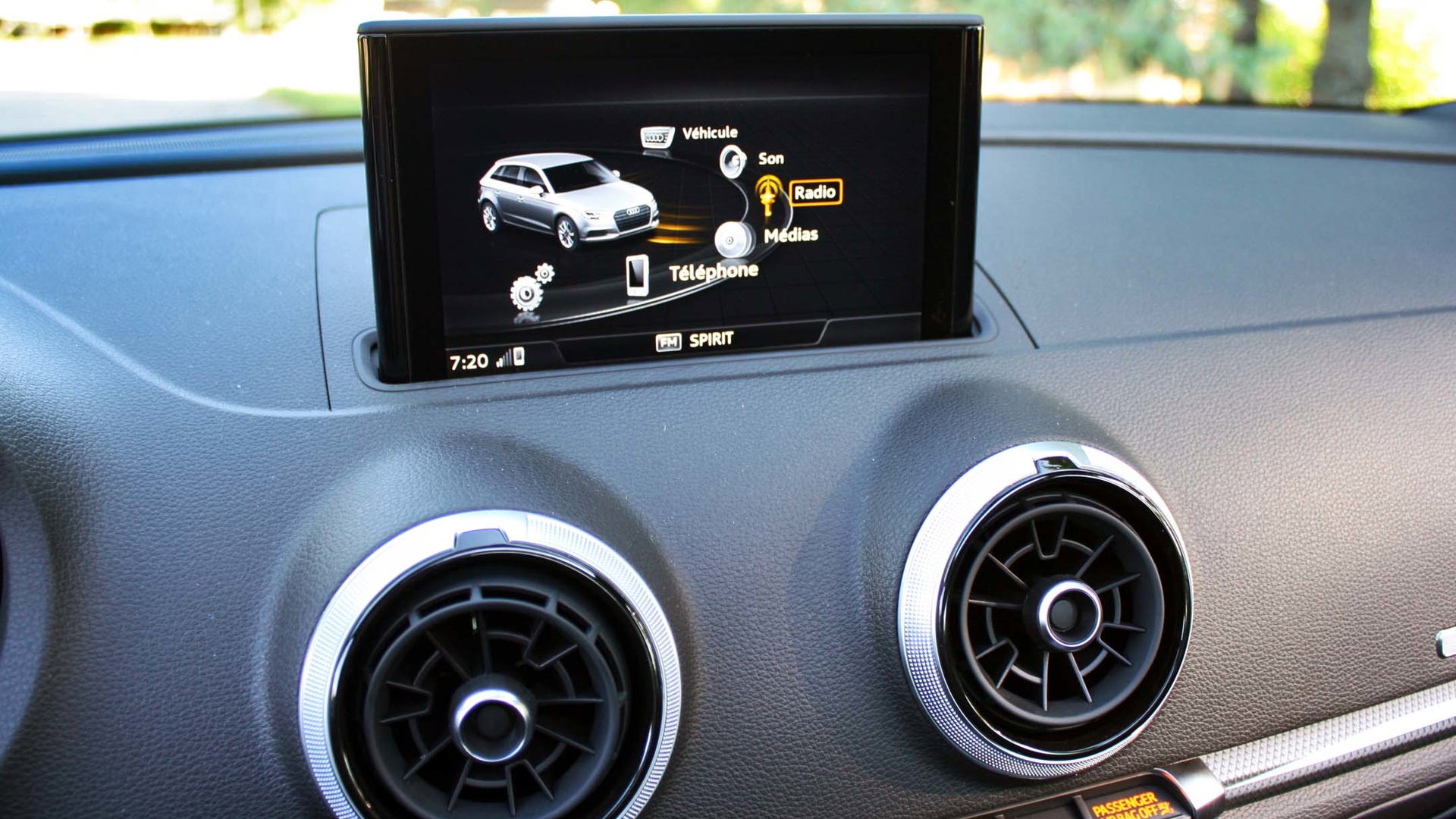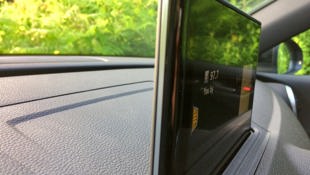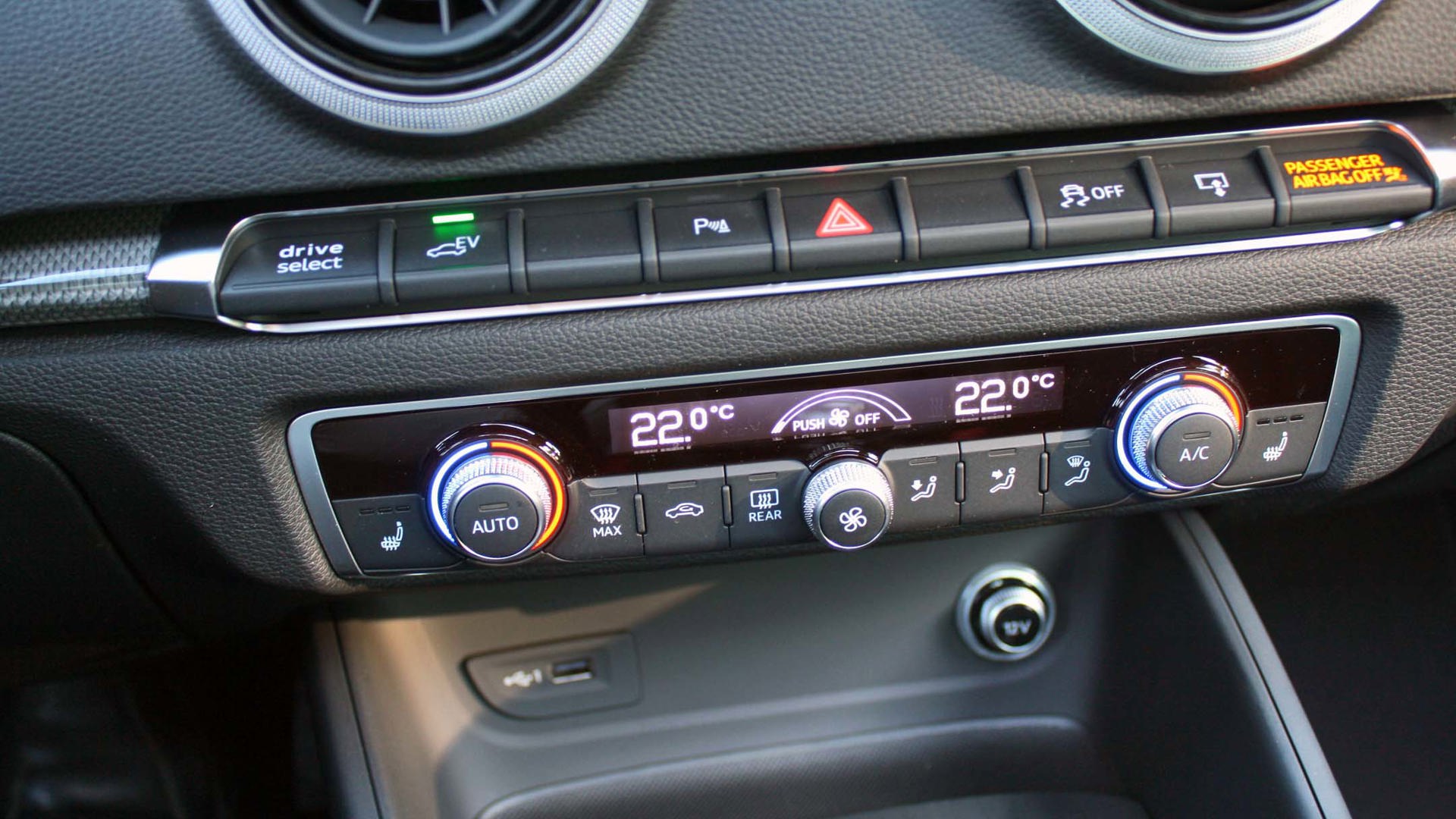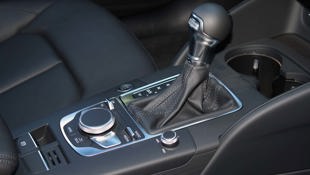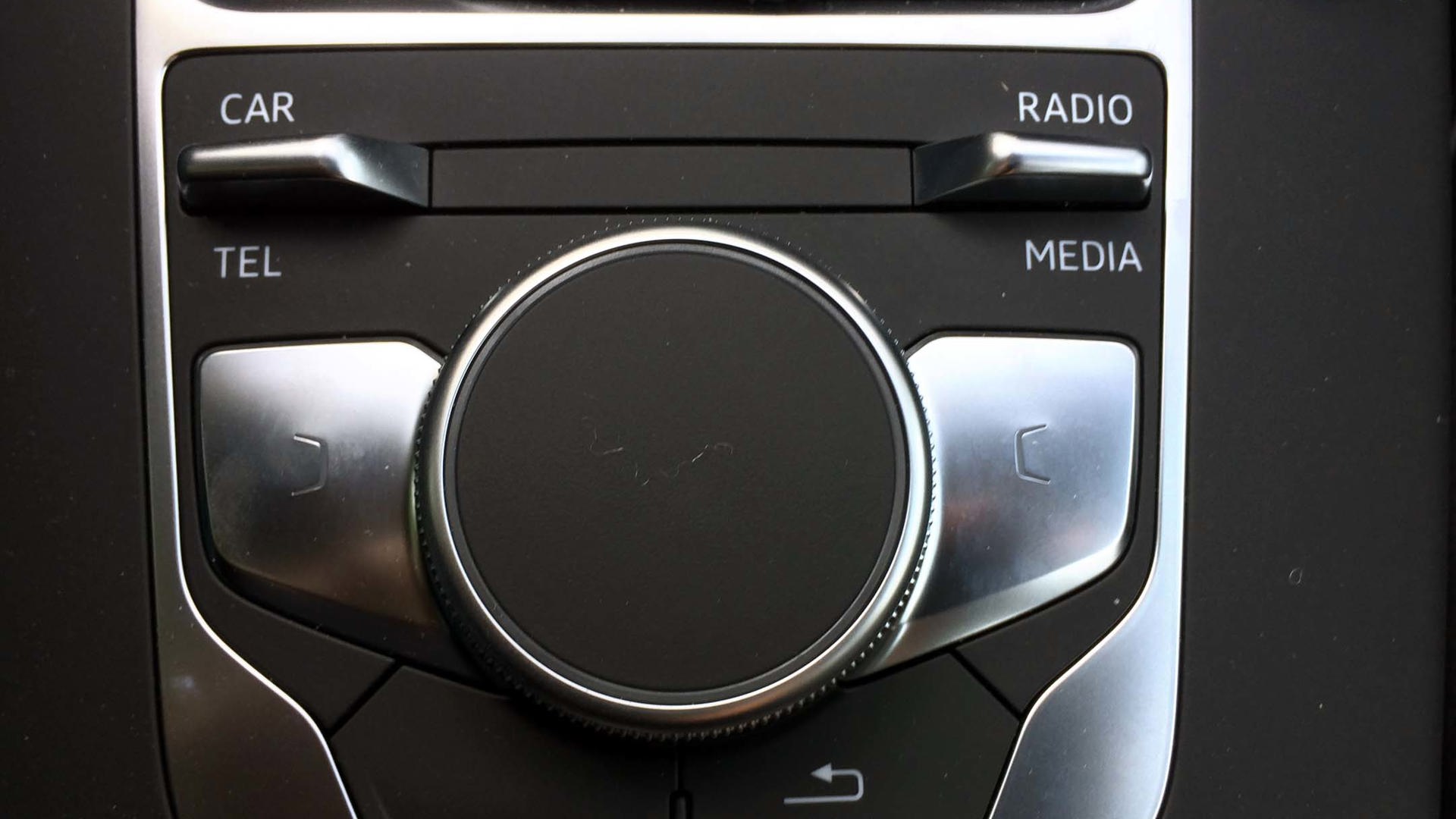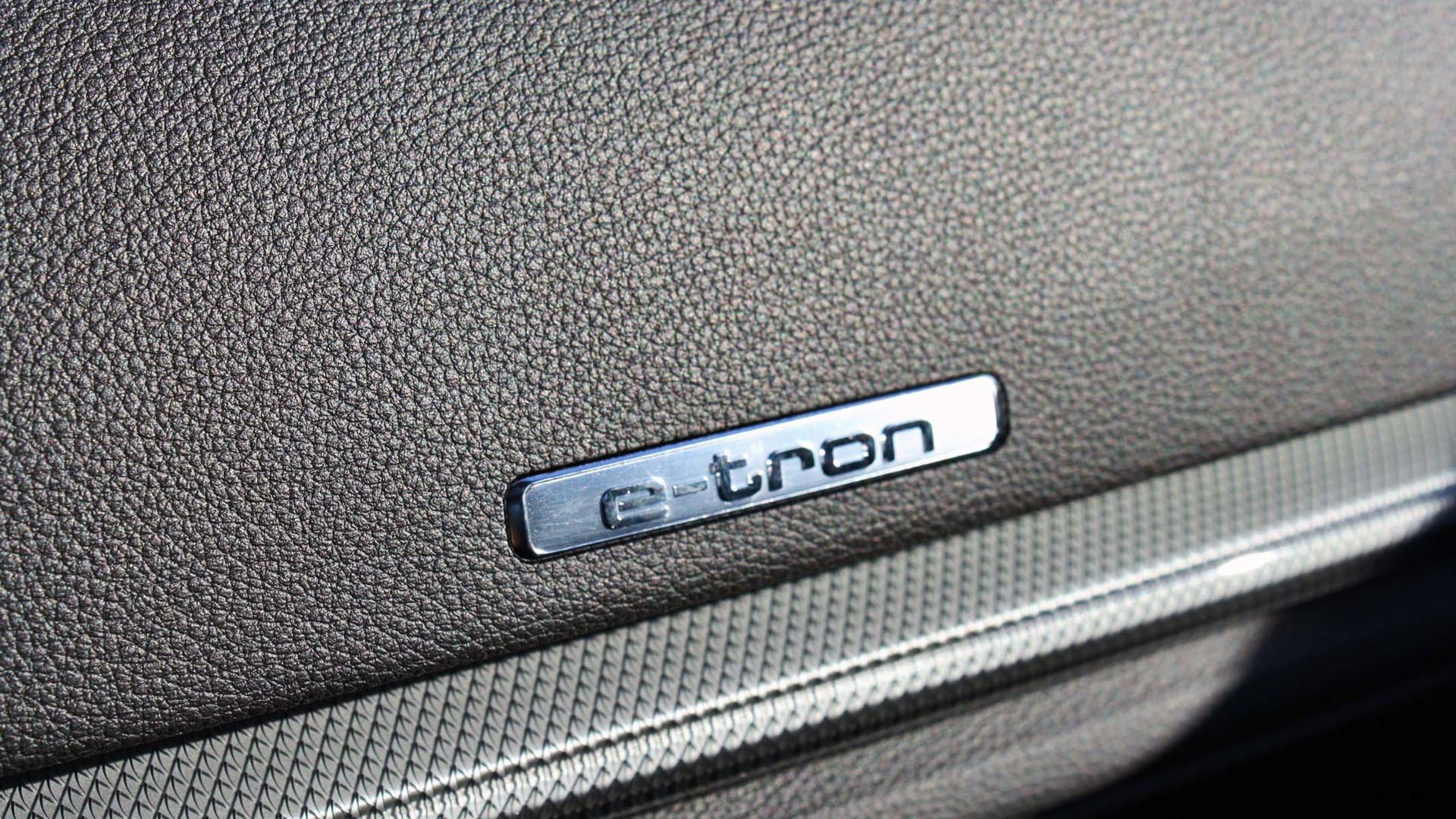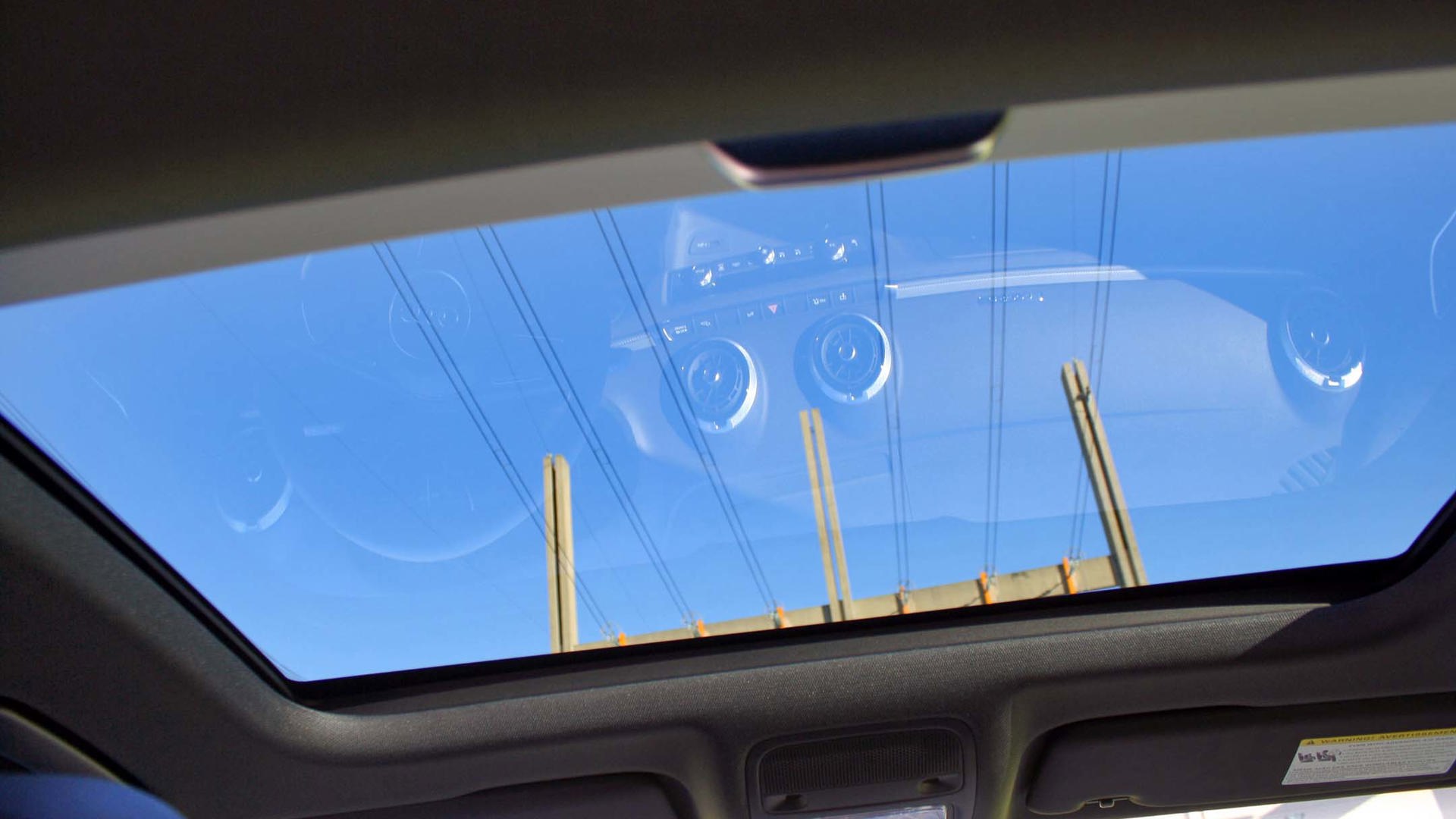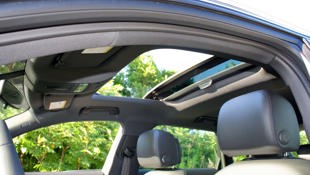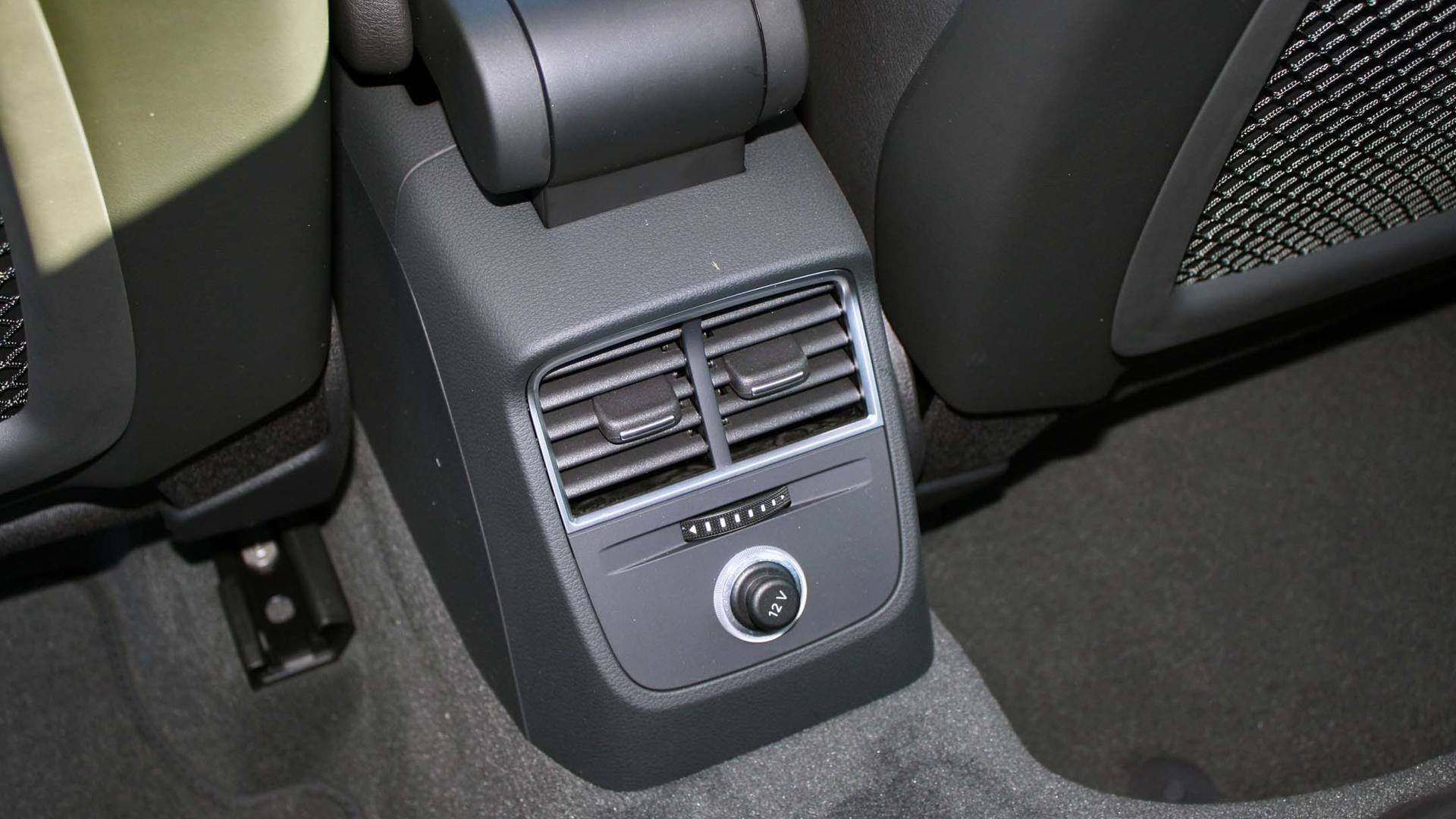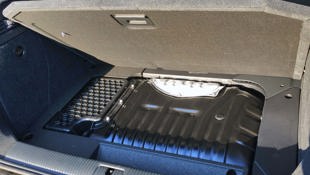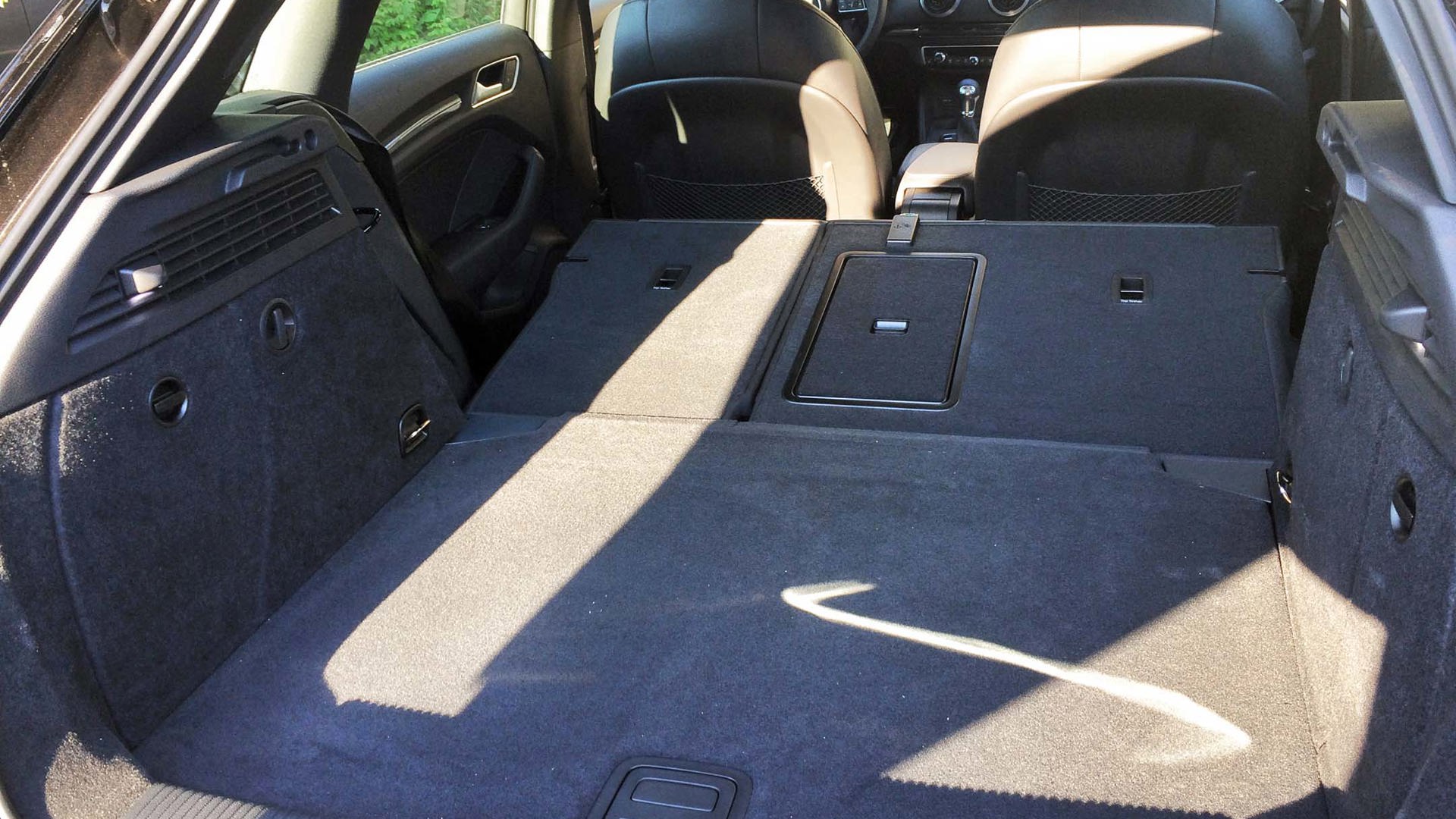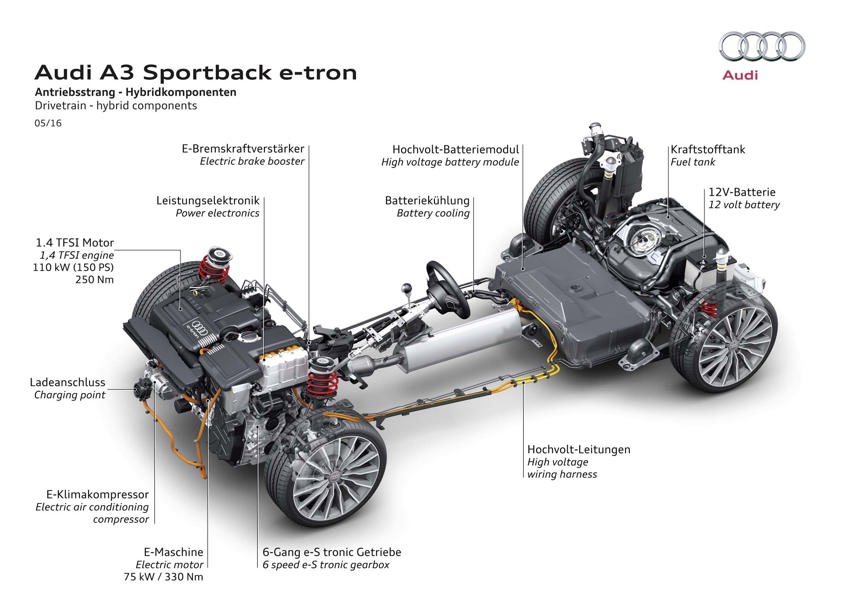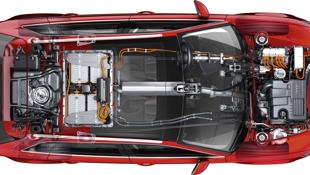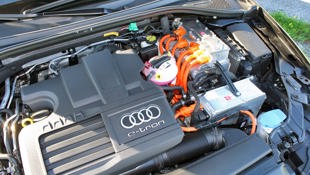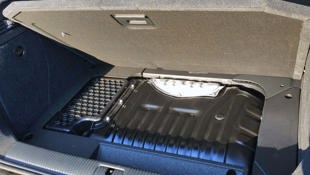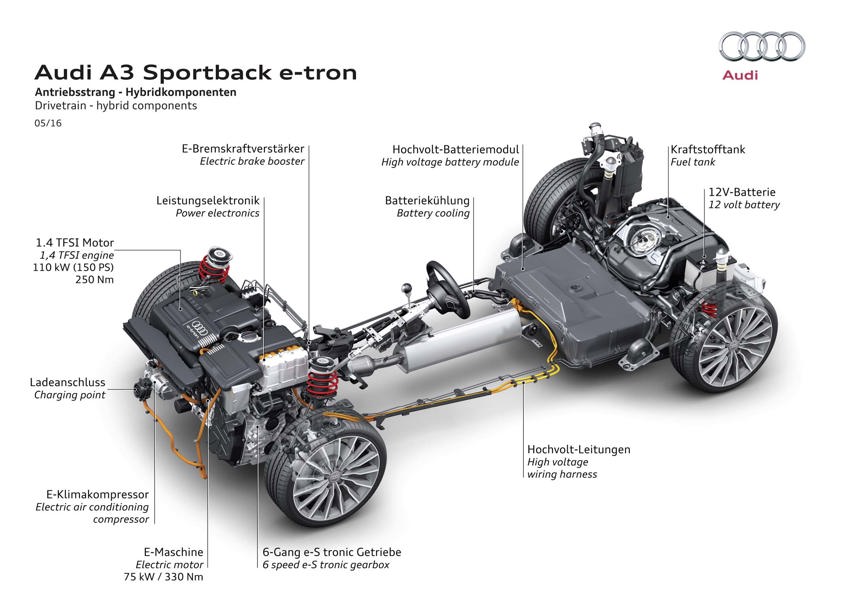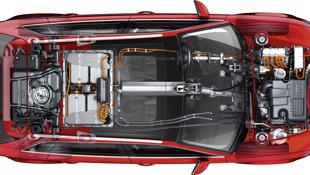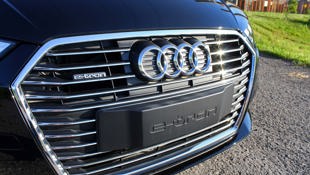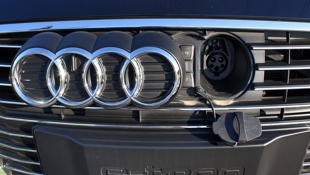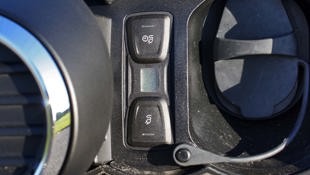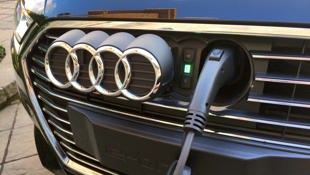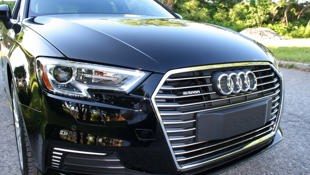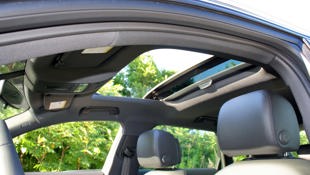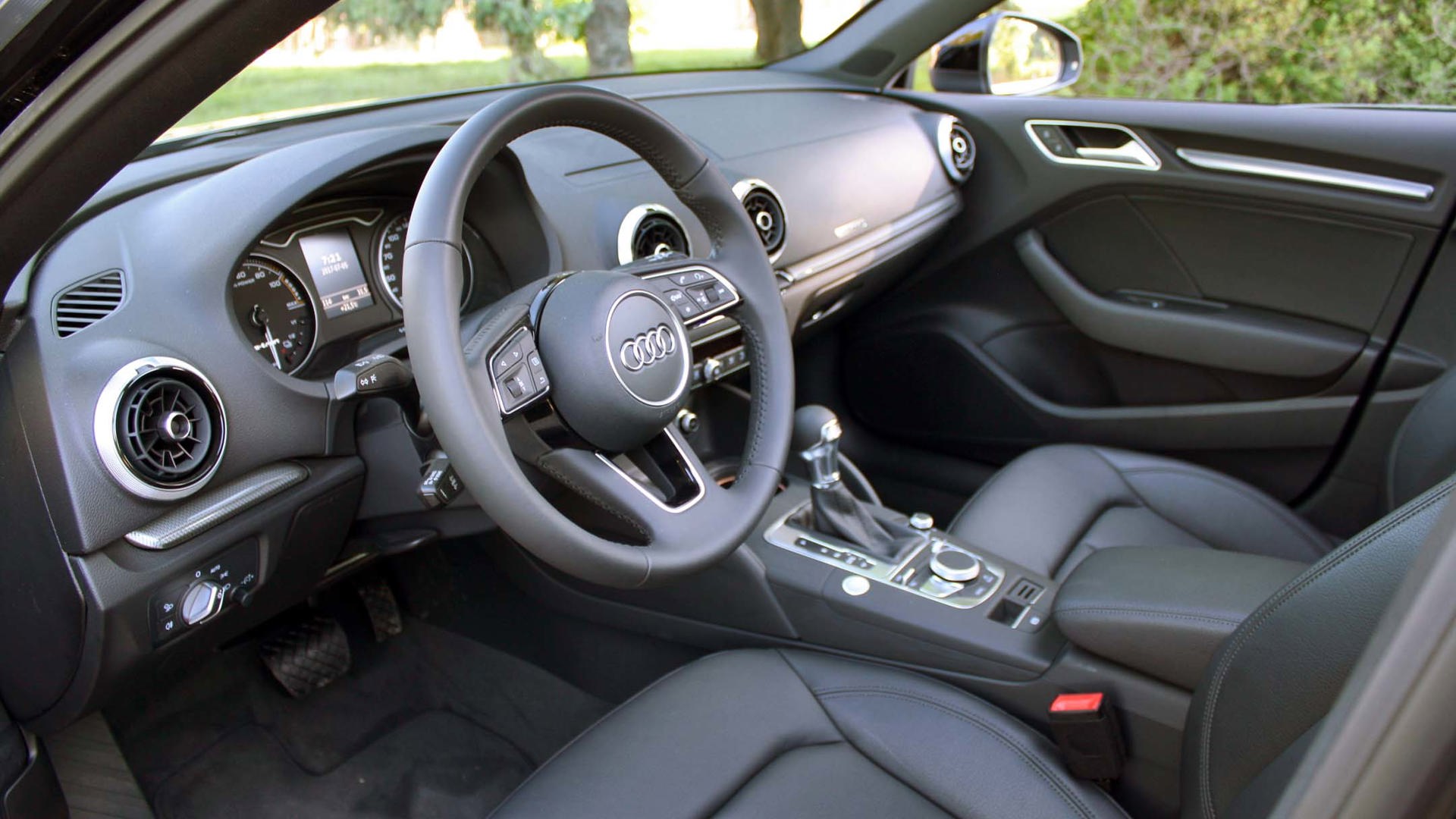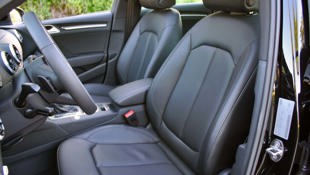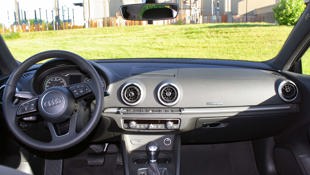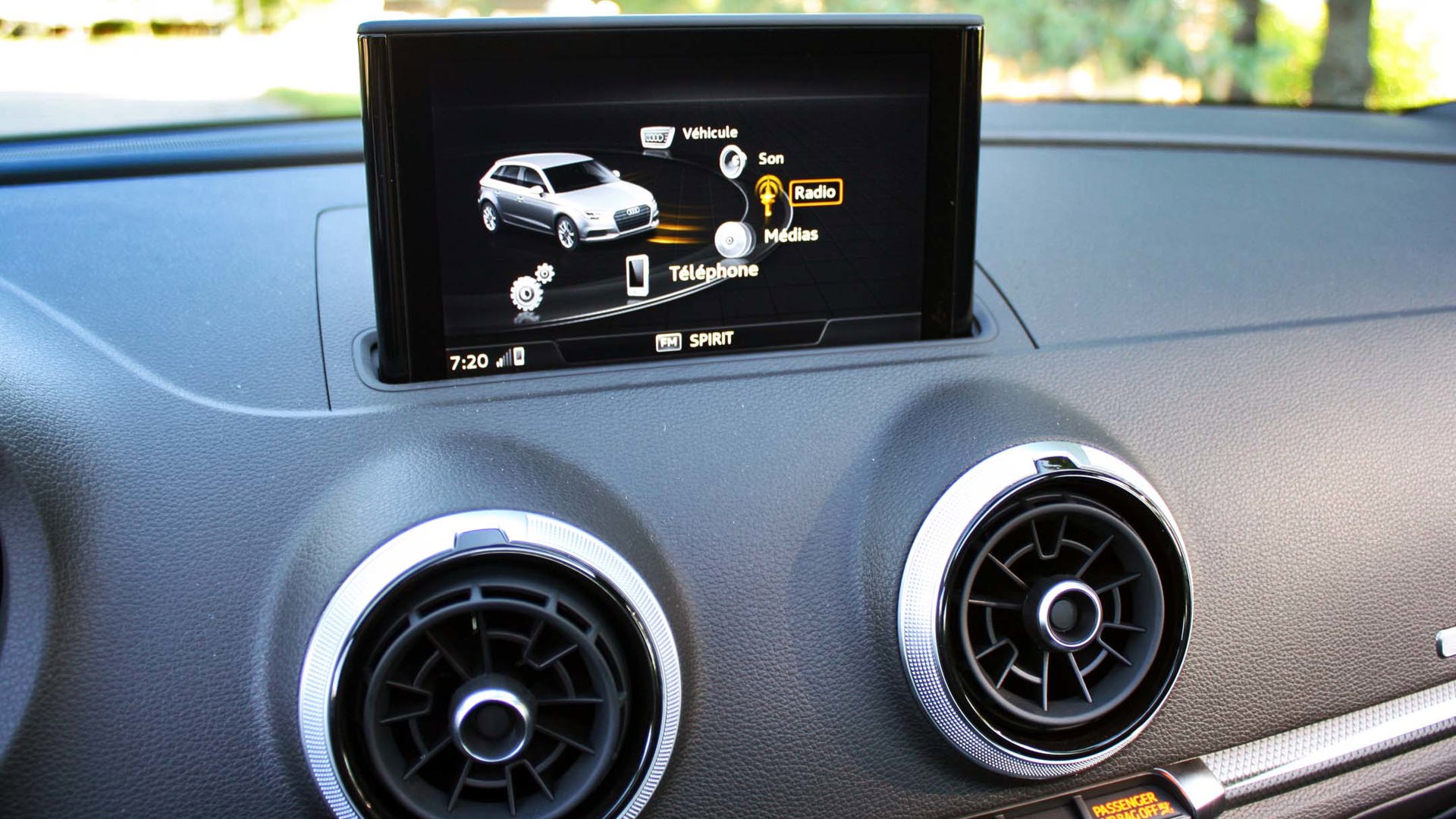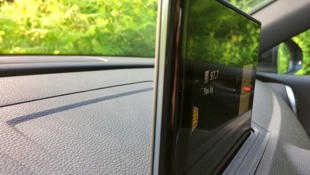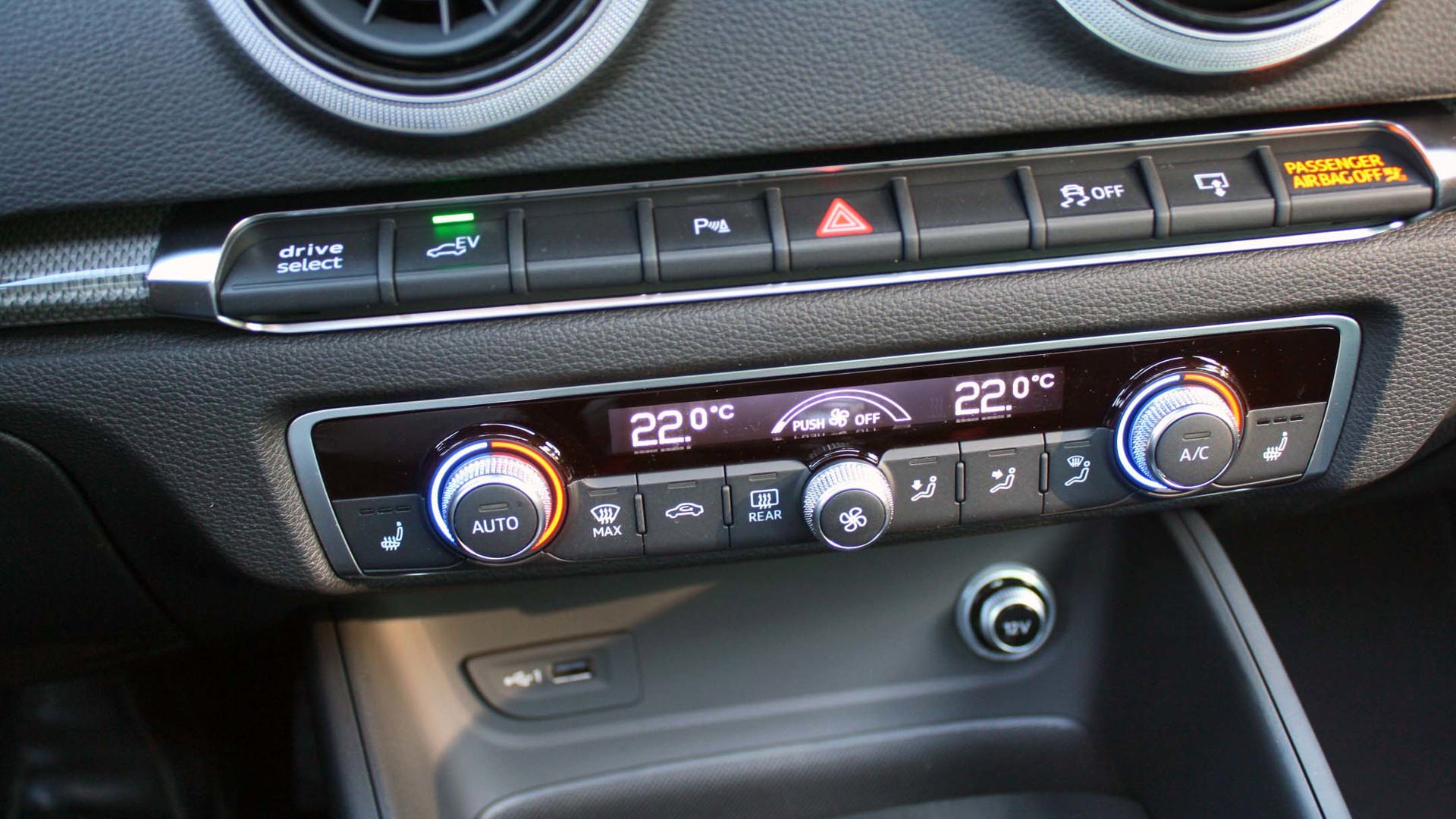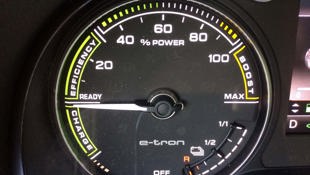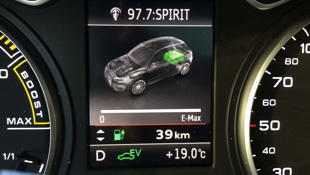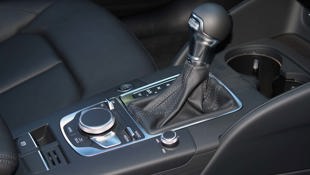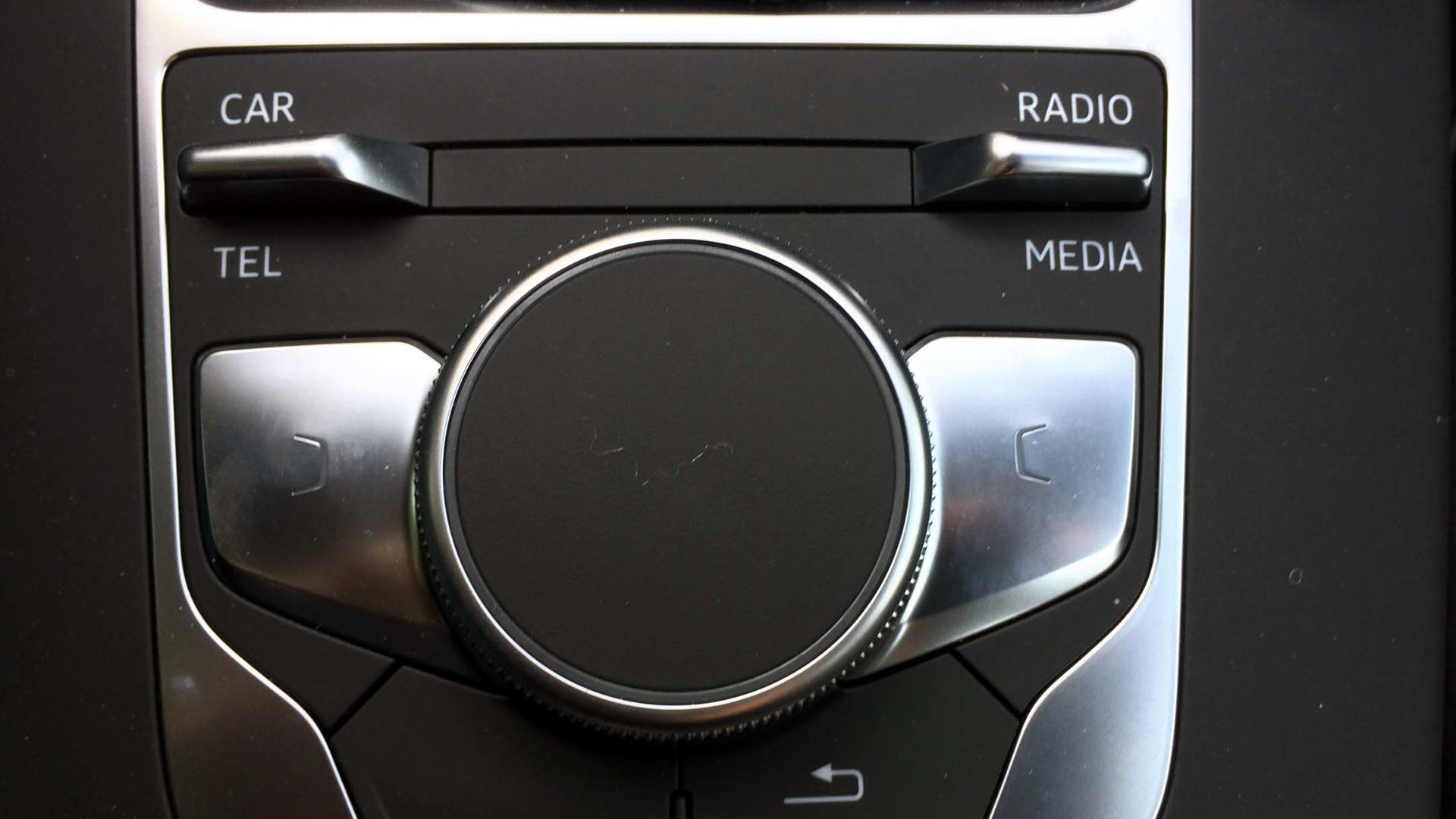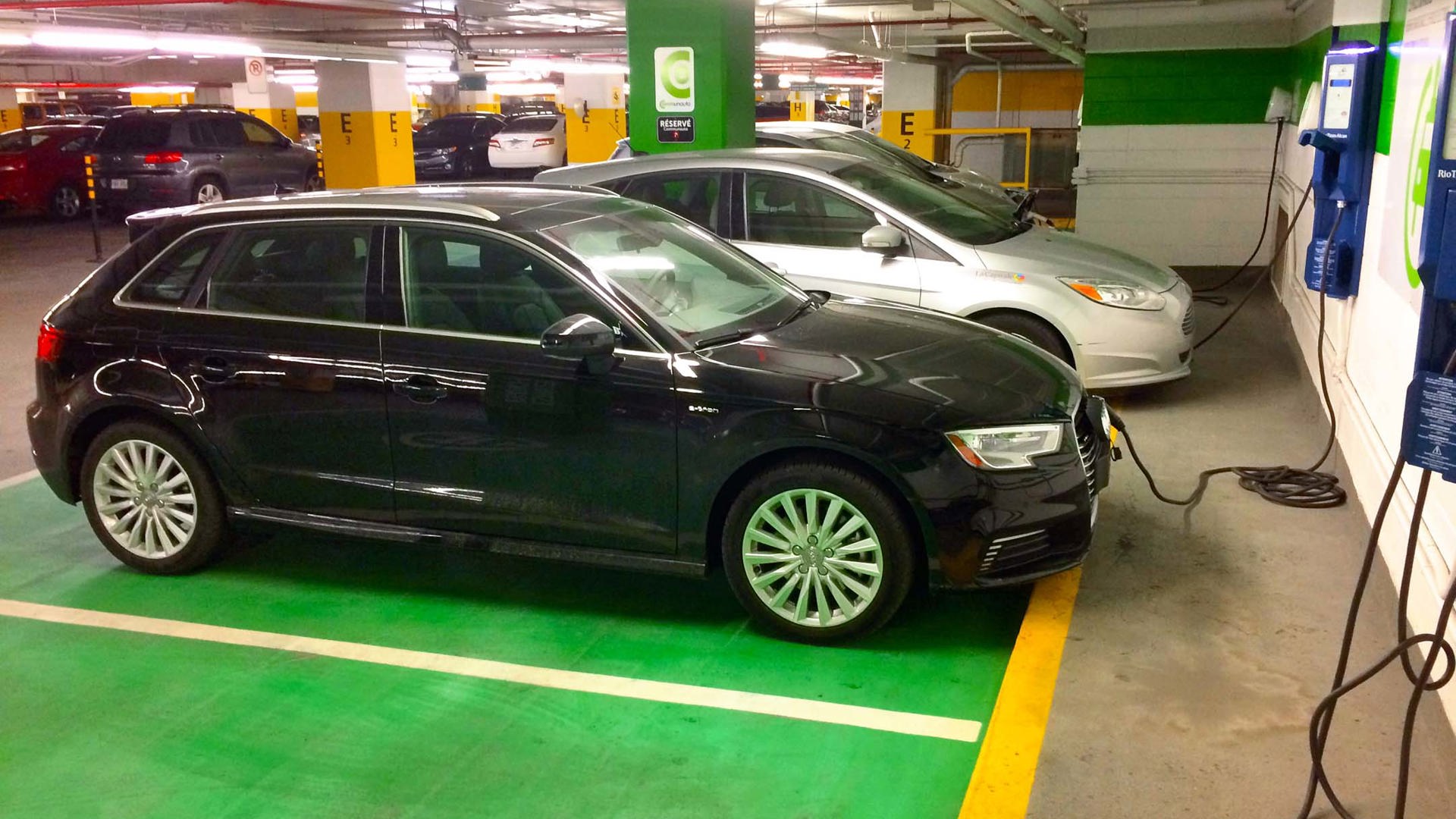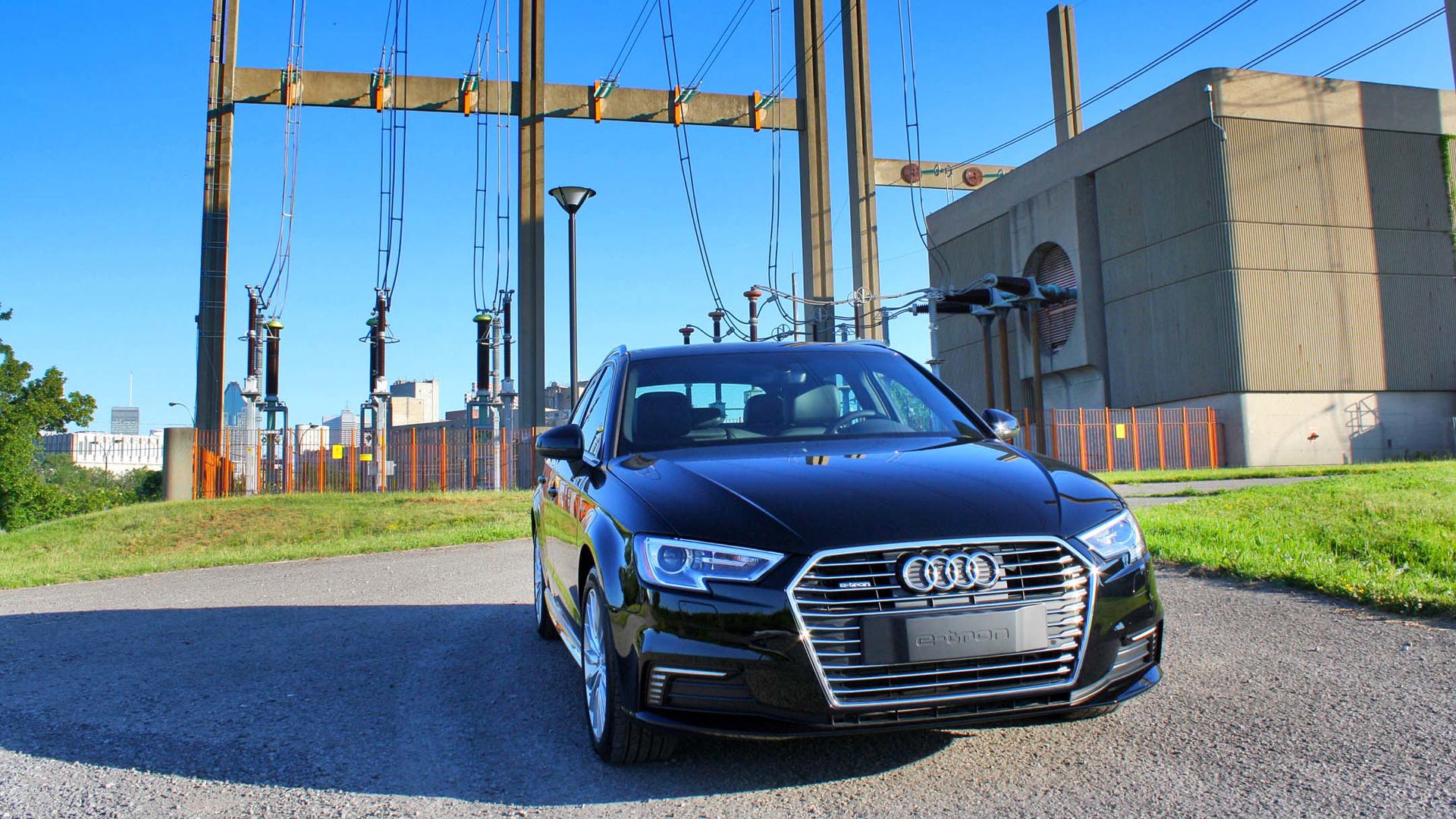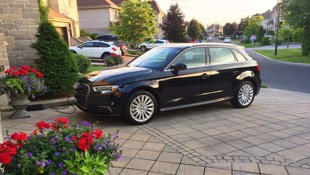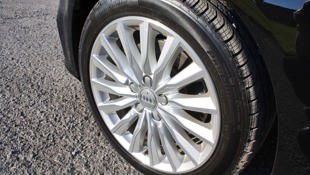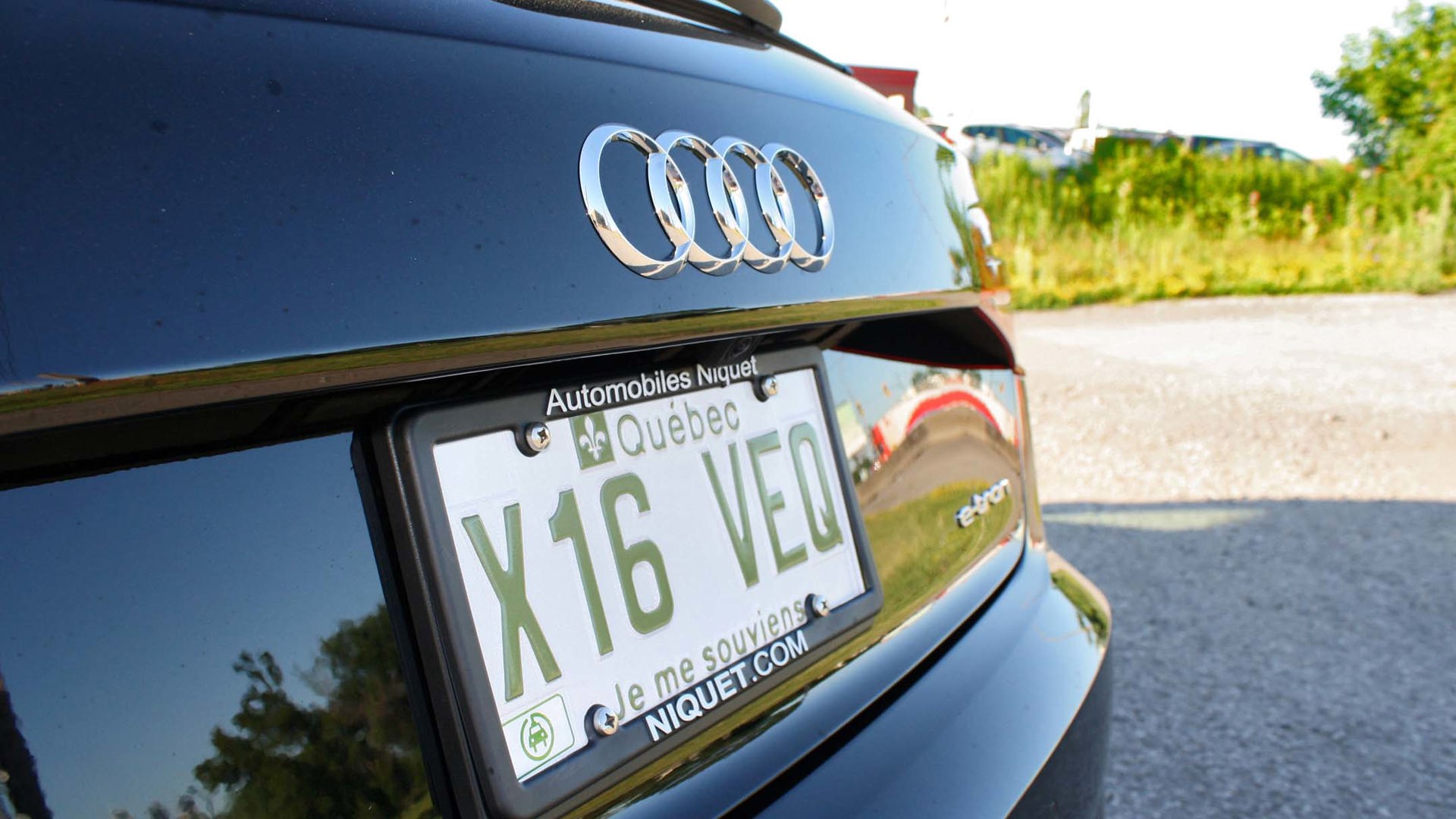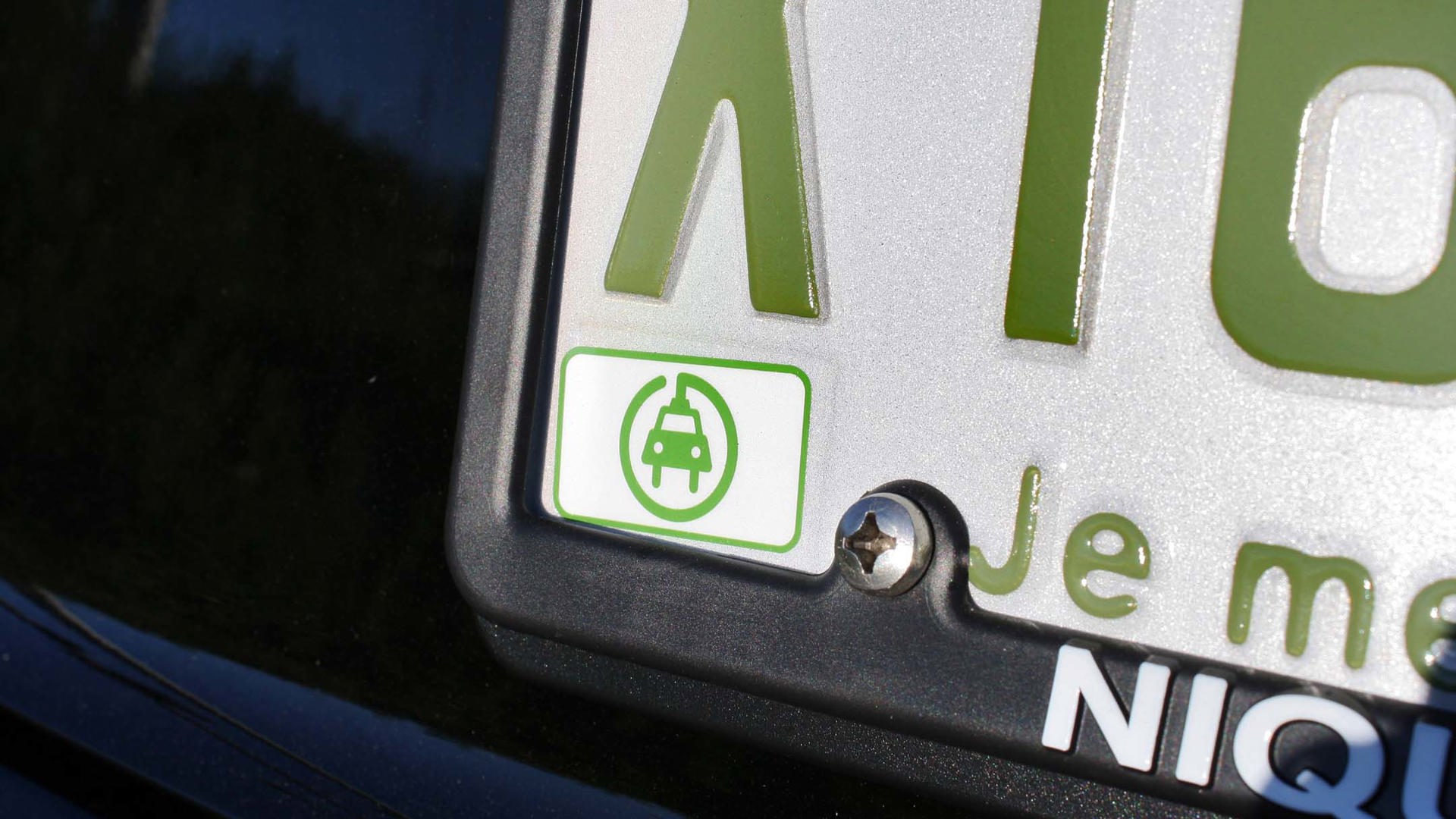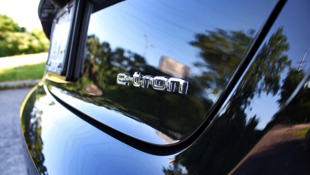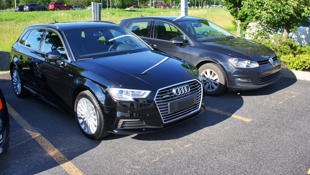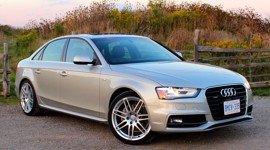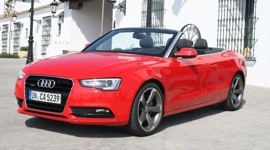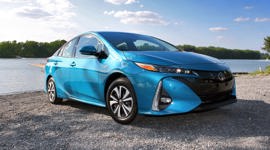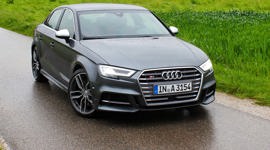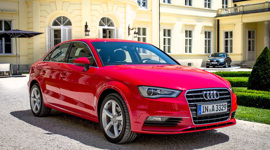 AutoTrader SCORE
AutoTrader SCORE
-
STYLING8/10
-
Safety9/10
-
PRACTICALITY8/10
-
USER-FRIENDLINESS7/10
-
FEATURES7/10
-
POWER9/10
-
COMFORT8/10
-
DRIVING FEEL8/10
-
FUEL ECONOMY10/10
-
VALUE8/10
Irony. It’s the first word that comes to mind when approaching this plug-in hybrid (PHEV). Not long after VAG’s (Volkswagen Group) ivory tower came crumbling down in a dark cloud of diesel soot, the Audi division launched the clean-as-a-whistle PHEV version of the popular new A3 in North America.
With its first mass production plug-in, Audi sought to make the driver’s experience as normal and “un-EV” as possible.
More than a few French-Canadian jaws dropped when “e-tron” badges were seen on the production car – in Quebec, “étron” is slang for a piece of poop. For the rest of us, the name recalls the showcar of 2009 and images of Disney’s 1982 cult film Tron.
Rebooted as a sedan in 2015, the current generation of the A3 proved to be a strong seller for Audi right out of the gate, but fans of the previous iterations were left looking for their five-door. First promised as a TDI-only model, the third-generation Sportback (Audi-speak for “hatchback”) was delayed coming to the North American market and finally bowed a model year later – exclusively in this often discussed, rarely seen PHEV version. Let’s face it: the Sportback e-tron is more than medium rare. You are 50 percent more likely to come across a Dodge Challenger SRT Demon, as Canada’s yearly allocation of the greenest Audi is but 200 units. As a ZEV compliance vehicle, most units are reserved for other markets.
Rarity aside, the irony here is that VW had an effective TDI antidote from within the corporate walls, thanks to the engineering teams that penned the MQB platform. First introduced to North America with the MkVII Golf and current A3, the platform’s acronym stands for “Modular Transverse Matrix” (well, Modularer Querbaukasten to be exact). Designed from the start to accommodate electrification, the incorporation of the hybrid components here reaches an elegance that can’t be touched by merely “converted” cars.
Rear-seat room is unaffected, and the trunk floor is low and flat. Sure, the alternate “lower” trunk floor position found in platform-mate Golf is not available here, but compared to a C-Max Energi’s “battery in trunk” arrangement, the result is nothing short of phenomenal in such a compact car. The battery pack is housed under the rear seat, where the fuel tank would otherwise reside. In a game of engineering musical chairs, the spare tire is booted out, its cavity taken up by the gas tank.
In an effort to promote this drivetrain’s reliability and promise of efficiency, 80 A1 e-tron prototypes and 40 early production units of the A3 e-tron were lent to normal German users who covered 1.4 million kilometres collectively with the cars over two years. One of the objectives of that program was to prove that a short-range PHEV could cover most participants’ needs under battery power alone. The final tally proved Audi was right: 70 percent of trips were completed within the e-trons’ range limits.
Hybrid Science
Answering questions all week about what this car is, and what it does, pretty much explained why electrified vehicles don’t have as much market penetration as expected. People pretty much get what a full-on battery-electric vehicle (BEV) is, but many are still confused by run-of-the-mill hybrids. So it’s no surprise that nobody really gets what a plug-in hybrid (PHEV) is. Show them a car with a tailpipe, a gas cap, and an SAE J1772 charging portal and their minds go blank.
“It’s just like a regular hybrid, but with a larger battery than you can charge up by plugging it in, so it drives further on battery power alone,” I say. In return, I get: “So it doesn’t use any gas!” Um, no, it does. “So the engine only acts as a generator?” Ah, no, not really. So let’s grab a white coat and start the lesson.
Up front, transversally mounted under the hood is VAG’s all aluminum, direct-injected DOHC 16-valve 1.4-litre TFSI turbo four. By itself, it produces 150 horses and 184 lb-ft of torque on the required premium gas, down 36 and 37 respectively versus the base A3 sedan’s 2.0L mill.
Important to note: this is not the same powertrain as found in the Volkswagen Jetta Hybrid as many believe.
In the e-tron we find a six-speed S tronic dual-clutch transmission. Sandwiched in a special drivetrain casing between the internal combustion engine and the robot gearbox is a disc-shaped, liquid-cooled electric AC motor, good by itself for 102 hp and 243 lb-ft.
A separating clutch sends all possible combinations of gas and electric power through the transmission. Adding numbers up won’t reveal total combined horsepower – that would be too simple. Plot the power and torque curves of both power units on the same graph, and the max combined power is revealed to be 204 hp, along with TDI-worthy peak torque: 258 lb-ft. Both figures handily surpass a regular front-wheel-drive A3’s, but with the caveat of added weight from the 125 kg battery pack.
No quattro badges are to be found on the e-tron, the mass of the liquid-cooled lithium-ion 8.8 kWh battery and its protective shields getting in the way of any RWD bits. As mentioned before, the massive battery does not encroach on cabin volume as it simply took the space vacated by the gas tank.
German engineering never takes the easy road: charging the battery is done by twisting a little handle in the grille’s Audi logo, and carefully pivoting it to the left on delicate hinges, revealing the SAE J1772 charging portal. The idea is on par with Q’s efforts in the 007 movies, but the execution only gets a C– as the whole setup feels frail.
Unlike other PHEVs, buttons next to the portal allows one to choose between immediate charging and a previously programmed scheduled charge, eliminating a return trip inside the cabin. All plug-ins come with a portable EVSE (Electric Vehicle Supply Equipment), but here the Germans went overboard again. VAG’s 3.6 kW unit is the only such device fully built to use 240V current, and thus comes with a separate adaptor for an SAE industrial plug.
Of course, the device has a sober design, weighs as much as a Mercedes engine block and has no handles on its smooth surfaces, so be careful not to drop it. Its cable is also pretty short, and you need a (provided) hex tool to swap plug adaptors. The whole thing comes in a suitcase large enough to take up a third of the trunk’s floor.
Which brings us back to the gas tank. You will find it under that trunk floor, sharing what used to be a spare tire well with the 12V battery. Heavily protected by the MQB platform’s structure and the rear suspension, the gas tank will hold 40 litres of premium gas. As is often the case with plug-ins, there is no room for a spare tire, so you will find a compressor hidden in the left wall of the trunk, and run-flats at all corners.
Do note that the trunk offers the same volume as non-hybrid Sportbacks sold in Europe, the floor being set at the same level. Finally, like any BEV, both the brake’s booster and the A/C compressor / heater are electric, so both will remain in function when the gas engine is not in use. Class dismissed.
Body Image
Ready for a night on the town? The e-tron follows Audi’s design ethics and despite the high-tech internals, nothing here recalls cheap props from a sci-fi set (cough-cough, Prius Prime), so you won’t look like an EV geek on the main strip.
The e-tron marries its green creds with uptown looks, the tester looking especially sharp here in black-on-black. The A3 sedan’s silhouette is a familiar sight on our roads, but not the Sportback’s. Sharing basic floorpan and proportions with the Golf hatchback, the Sportback manages to look completely different, as evidenced when I parked it next to a dirty diesel Mk VII Golf, on purpose.
The rear hatch trades full cargo capacity for style, with more rake to the glass than a Golf’s. The roof is lower, but the stainless steel roof rails that come standard on North American Sportbacks give the car a compact CUV vibe, as often remarked by bystanders. While labelled a “wagon” by many, the Sportback actually offers the same trunk floor area as a Golf hatchback’s, so credit Audi’s stylists in making the car look longer and wider than it actually is (it’s even a bit shorter in length and wheelbase than a regular Golf).
The Progressiv trim’s base 17-inch 10-spoke alloy wheels fill the fenders quite nicely, and the brightwork around windows and grille elevate the Sportback visually from a basic A3 Komfort sedan. What may look like “quattro” badges from afar actually read “e-tron”, as does the filler plate in the grille where the front licence plate would be mounted in other provinces.
Xenon headlights, LED daytime running lights and taillights, plus standard S line lower-body trim complete what is probably the most sensuous compact hatchback around. “Green” details are subtle: that charge portal cleverly hidden behind the Audi rings and an invisible tailpipe. Less subtle is the green-lettered Quebec licence plate, granting free passage on the province’s few tolled bridges and solo use of some HOV lanes.
As with all A3s, leather seating is standard, powered, and heated in front, as is the panoramic sunroof. While A3 sedans begin at the Komfort trim level, e-trons skip right to the mid-level Progressiv trim and top out with the appropriately named Technik trim. This one offers Audi’s Virtual Cockpit, along with the MMI Plus infotainment. The regular MMI in the Progressiv shares the same powered, thin, but non-touch-sensitive screen that motors up from within the dashboard.
The “iPad stuck on the dash top” look is not for everyone, but in return it offers great legibility, set as it is in open surroundings at ideal height. Don’t care for the screen? Send it back down in its cave by pressing a button, and enjoy the great forward visibility, courtesy of the low-cowl design. The rotary MMI control is set on the console, right at your fingertips. Toggle switch shortcuts and menu buttons all provide tactile feedback and enable you to navigate the infotainment system while keeping your eyes on the road (voice commands are also available).
The e-tron offers two USB inputs, an auxiliary jack, a slot for an SD card, Bluetooth connection, and of course, VAG’s glovebox-mounted single CD player. The tester made do with the base, 10-speaker 180 W audio system – Technik-trimmed cars are treated to a Harman Kardon upgrade. Interestingly, bass and treble settings need to be set differently for the various audio sources. None seemed well adapted to my audio wants, which had me longing for the absent mid-range tuning, or an old-school equalizer.
A rear-view camera is standard (it’s still an option on base A3 sedans), but as is often the case with premium brands, you will be nickel and dimed for features that come standard in a Golf.
Apple CarPlay and Android Auto are only available with the $2,300 Navigation package, the cheapest ticket to MMI Plus nirvana. Want that automatic inside rear-view mirror? You’ll have to pay the $5,000 entry fee to the Technik trim to get it. You do get a few standard upscale features, such as eight-way powered seats for both driver and passenger, keyless access with start button and automatic wipers.
The Sportback also offers a feature that is not available in any A3 sedan: rear headroom. At 6', I have plenty of space in the Sportback, while in the sedan my head is wedged in the headliner. My three teenagers rode back there, something than can’t even be envisioned with a Volt. Otherwise, the cabin is standard A3 fare, all black from floor to ceiling, with the no-cost option of black, brown, or light grey leather and door accents. The ambiance is more TT-sporty than A6 executive, the main attraction being the round, chrome-ringed vents that are probably the simplest to use and best in the business. Things are flashier at night where every control and footwell is backlit by a ghostly white LED light.
Moving Forward
Last year, while writing a feature on making the move to electrics, it dawned to me that the PHEV was the ideal vehicle to convert the masses to clean power. Yes, BEVs are a noble cause, but that target is way too high for Joe Public. Our governments are trying to push radical change down citizen’s driveways, but by doing so and neglecting habit-changing hybrids, they may actually be contributing to BEV’s lack of traction in the marketplace.
Let’s consider the plug-in hybrid stage as temporary training wheels on the way to fully electric mobility. With a PHEV, range anxiety is out of the equation – the e-tron’s is an indicated 800 km with a full tank and a full battery. Driving the e-tron is perhaps the most “normal” EV experience one can get. In Progressiv trim, there’s no feedback on energy use, no timed charging programs to fiddle with and no cabin conditioning to learn about. That will frustrate hardcore EV enthusiasts, but make the overall experience more “normal” for newbies (the usual EV energy info is available with the optional MMI Plus). Just plug it in between drives, and watch the status light next to the charge portal to know what’s going on (it simply turns off when the charge is complete).
Like most electrified vehicles, the e-tron offers driving modes to enable propulsion choices. “EV” is the default, running the car on battery power alone as long as there’s juice left. Just get in and drive in silence – simple. Unlike a C-Max Energi, the internal combustion engine won’t come on at random times. Here, the AC motor has plenty of oomph to move the car with authority, and only a full carpet mash will trigger the gas engine to the rescue. Staying electric in the Ford requires feathering the go pedal at all times and tackling on-ramps like grandma. Not so with the e-tron, which basically becomes a true EV for an indicated maximum of 43 km (my best charge on 120V).
Hybrid mode will cycle between electric, gas, or run both as with any hybrid, shutting down the four-banger when at rest, but without the CVT-induced droning of the competition. “Hold battery” mode runs the gas engine at all times, preserving battery charge for later use.
A fourth mode that charged the battery with the gas engine was removed from the 2017 feature set. In all modes, regenerative brakes send power back to the battery, but curiously lifting off at speed induces a “glide” mode where all resistance to movement is neutralized, the very polar opposite to a typical BEV’s “one pedal driving”. Even the brake pedal feel is normal, with no clear transition between regenerative and friction brakes. Clearly, with its first mass production plug-in, Audi sought to make the driver’s experience as normal and “un-EV” as possible.
Therefore, on the go, the flavour is all Audi. The driving position is excellent, thanks to the eight-way power seat, tilt and telescoping steering wheel, and height-adjustable center armrest. All-around visibility is excellent, the retractable screen enabling a low-slung instrument panel, taking advantage of the lower cowl. Not selecting the Sport package places a circular steering wheel in your hands (Sport gets a racier, flat-bottomed one), but rim diameter and spoke position is just about perfect, and only the non-Sport wheel is graced with floppy paddles for the S tronic gearbox (go figure).
Push down the button for the electric parking brake, put the eight-ball shifter in “D” and off you go. In EV mode, the terrific soundproofing really shines and passengers may not even notice when the gas engine comes on. The AC motor offers plenty of power on its own to keep up with traffic, or even slice through it (and the engine won’t come on unless you go north of 130 km/h). The Audi drive select feature offers a choice of driving styles: comfort, auto, dynamic, and custom. None will affect the actual performance or handling of the car – the suspension is purely analog. But you can have your pick of steering effort, transmission shift points, and throttle pedal tuning. As is often the case with these menus, “Auto” did just fine, but the driver can save a personalized combination on the “custom” setting.
“Sport” mode is accessed by bumping the gearshift down, and removes direct access to the EV mode for the remainder of your trip, as does the foot-to-the-floor max power boost (the car may return to EV by itself once in Hybrid mode). Engine revs are increased, shift points altered and the AC motor is summoned so the driver can enjoy all the combined horses along a twisty mountain road, but that pleasure only lasts ’til the battery runs out of juice. My canyon roads being framed with glass, steel, and concrete, I mostly motored along in EV mode, enjoying the chassis’ precision through the off-ramps and high-speed sweeps of urban freeways. Despite the stiff sidewalls of the standard 225/45R17 Continental run-flats, the e-tron’s ride is smooth but firm, never jarring, never floaty.
This green Goldilocks strikes a perfect balance between Golf TSI and Golf GTI, but with a refinement that its cubicle cousins can’t touch – this is corner-office material. Audi credits a 7.6 s performance in the usual 0–100 km/h trials and a top speed of 210 km/h – try that in a Prius. A part throttle launch in “Sport” will make the front tires sing, no question there.
The A3 Sportback e-tron may be lacking some upscale features in the basic Progressiv trim, but at core this is an entry-level luxury car that delivers all the niceties one expects from this class of car, and tops them off with an impressively executed plug-in drivetrain. Observed driven range has always exceeded Energuide’s 26 km rating for all of my trips, despite commuting on 100 km/h highways, with an average of 33 km.
Perfect Fit
A PHEV is tailor-made for commuters with regular, short routes with plugs at both ends, or for quick errand runners. Your author fits both profiles. Like all hybrids, their frugal nature shines in town, where I live, work and play. I picked up this car at an Audi dealership, and it was indeed a very green car – only 82 km on the odo, fresh off the boat.
Old habits die hard: I was handed a car with a full tank and empty battery, despite me seeing a few unused charging stations around the facility. So the e-tron ran mostly on gas on the way home. The four-banger only lit up two other times during my week with the car: to test Hybrid and Sport modes, and once to complete an out-of-range errand. For most of the week, I wrestled with the cumbersome portable EVSE and grabbed a public Level 2 charger once during a downtown meeting; in other words, I ran it on battery most of the time. This morning, I pulled up to the pumps in electric silence, next to a guy getting a cramp filling up an F-150.
The pump clicked off at 2 litres, then at 2.2 litres when I insisted. That’s 0.64 L/100 km. I could see the big question mark above the truck guy’s head when I left the pump in silence. He was probably still pumping gas by the time I plugged in at the office. With no feedback on electric power use, it’s impossible to factor in electricity costs, but at Quebec rates, driving an e-tron on e-power is cheaper than drinking barista coffee.
Now, this specific car, as tested, is a unicorn amongst the usual crop of loaded-to-the-gills media vehicles lent to journalists by premium car manufacturers. This e-tron has but one option: the $500 parking sensor package. Even the paint is the no-charge, non-metallic Brillant Black (Ibis White is your only other free pick; all seven other paint options are $900 extra). Taken as-is with unchecked option boxes, the budget for the A3 Sportback e-tron is class-competitive, especially in the provinces that reward one’s green initiative with healthy incentives (see the numbers below): $43,595 as tested, minus provincial incentives if applicable – plus a hefty trade-in rebate if you own a TDI that’s on the recall list. Hmm.
After pondering the numbers, this black unicorn beauty made so much “cents” that instead of handing back the keys to Audi, I handed them a big check. This one’s a keeper.
Provincial Purchase Incentives
Ontario
$8,095 (after tax)
Quebec
$4,000 (after tax)
British Columbia
$2,500 (before tax)
| Engine Displacement | 1.4L |
|---|---|
| Engine Cylinders | 4 |
| Peak Horsepower | 150 hp @ 5,000–6,000 rpm; 102 hp (75 kW) @ 2,000–3,000 rpm; 204 hp combined |
| Peak Torque | 184 lb-ft @ 1,600–4,500 rpm; 243 lb-ft @ 2,200 rpm; 258 lb-ft combined |
| Fuel Economy | 7.2 / 6.6 / 6.9 L/100 km cty/hwy/cmb; 2.8 Le/100 km |
| Cargo Space | 386 L/955 L seats folded |
| Model Tested | 2017 Audi A3 Sportback e-tron Progressiv |
| Base Price | $40,900 |
| A/C Tax | $100 |
| Destination Fee | $2,095 |
| Price as Tested | $43,595 |
|
Optional Equipment
$500 – Front and rear parking sensors $500
|
|
